
IN BETWEEN
10 - 26 November 2023
IN BETWEEN
neuronal, human and social synchronisation and desynchronisation
IN BETWEEN invites us to explore synchrony and desynchrony, whether neuronal, human or social. The works presented question the way in which human expectations and representations interact with the way in which we connect and create links with both humans and non-humans. The works immerse the public in a space of sound and light, inviting them to contemplate and question the way they vibrate and (dis)synchronise with others and with their environment. Here, the artist evokes her many exchanges with scientists, as well as her interactions with wild and captive animals, with a range of multidisciplinary works based on interviews and research by CISA and the NCCR Evolving Language.
To enrich her reflections, Julie Semoroz invited Michael Cordey, social scientist and photographer. Together, they are crossing their gaze, weaving together art, neuroscience, biology, philosophy, sociology and anthropology, and discussing how human relationships are woven at the crossroads of our desires, perceptions, emotions, experiences and representations. Together, they hope to perfect and share their reflective approach, which aims to bring to light the light and shade that determine and shape the lives we lead in relation to others, both human and non-human.
IN BETWEEN
synchronisation et désynchronisation aussi bien neuronale, qu’humaine et sociale
IN BETWEEN invite à explorer la synchronisation et la désynchronisation aussi bien neuronale, qu’humaine et sociale. Les œuvres présentées interrogent la manière dont les attentes et les représentations humaines interagissent avec notre façon de nous connecter et de créer du lien aussi bien avec des humains que des non humains. Les œuvres plongent le public dans un espace son et lumière l’invitant à contempler et à s'interroger sur sa façon de vibrer et de se (dé)synchroniser avec les autres et avec son environnement. Ici, l’artiste évoque ses nombreux échanges avec des scientifiques, ainsi que ses interactions avec des animaux sauvages et captifs, avec différentes œuvres pluridisciplinaires qui ont été réalisées à partir d’entretiens et des recherches du CISA et du PRN Evolving Language.
Pour enrichir ses réflexions, Julie Semoroz a invité Michael Cordey, chercheur en sciences sociales et photographe. Ensemble, ils croisent leur regard, tissent des liens entre art, neurosciences, biologie, philosophie, sociologie et anthropologie et discutent de la façon dont les relations humaines se tissent à la croisée de nos désirs, de nos perceptions, de nos émotions, de nos expériences et de nos représentations. Ensemble, ils souhaitent perfectionner et partager leur posture réflexive dont l’horizon est de mettre à jour les parts d’ombre et de lumière que détermine et façonne la vie que nous menons en relation avec les autres, aussi bien humains que non humains.
-
Venue of creation: SEU - Salle d'exposition de l'Université de Genève
Sound design and composition: Julie Semoroz
Guest artists: Michael Cordey, Joseph Simon
Technical direction: Julie Semoroz
Technical and construction: Wendy Gaze, Emma Souharce, Amand Leyvraz
Computer programming: Thomas Köppel, Daniel Sziemasko and Coralie Debracque
Set design and construction: Wendy Gaze
Theoretical contributors: Didier Grandjean, Michael Cordey
Communication: University of Geneva, CISA and NCCR Evolving Language
Poster photo: Michael Cordey,
Poster design: Rob Van Leijsen
Production and distribution manager: Julie Semoroz
Production assistant: Emma Souharce
Production: Association Motonomy
Administration & accounts: Julie Semoroz and Nathalie Wenger
-
Coproduction and 11 November partners: Ensemble Contrechamps, City of Geneva, Musée d'ethnographie
Supported by University of Geneva - CISA, NCCR Evolving Language, SNSF, Pro Helvetia, Nicati - de Luze Foundation, Leenaards Foundation, Ernst Göhner Foundation, FEEIG
Partners: Le musée d'ethnographie de Genève, ALICe at Wyss Center for Bio and Neuro Engineering
Residencies, partners and hosting since 2021 : Le Dansomètre / Campus Biotech & CISA with Professor Didier Grandjean and Coralie Debracque / BIOPARC with the support of the NCCR Evolving language and grant from the City and State of Geneva, University of Zürich - Marta Manser's team on meerkats / Orcas Talk, residency in Norway, research project on human-cetacean inter-species vocalisation with researcher Jörg Rychen, ETH Zurich / NIRS with Coralie Debracque, campus Biotech-Kzern-CISA Unversité de Genève
Acknowledgements: Carole Varone, Emilie Wyss, Didier Grandjean, Manuela Filipa, Coralie Debracque, Léonardo Ceravolo, Dimitri Delcourt, Daniel Sziemasko, Alexandra Charvet et Jean-Luc Sudan, Laura Batti, Daniel Huber, Stéphane Fahrion, Sandrine Pelletier, Carl June, Pauline Cancela, Celia Lazzarotto, Carole Varone, Stefano Politi, Julie Monot
-
IN BETWEEN
A creation by the artist Julie Semoroz
From 10 - 26 November 2023
University Exhibition Hall
Bd Carl-Vogt 66
Monday to Friday, 12pm to 2pm and 4pm to 7pm
Saturday-Sunday, 2pm-6pm
INFORMATION
Free admission to all events, limited capacity for concerts and workshops
https://unige.ch/-/inbetween
VENUEShttps://unige.ch/-/inbetween
SEU - University of Geneva Exhibition Hall, Bd Carl-Vogt 66 1205 Geneva
MEG - Musée d'ethnographie de Genève, Bd Carl-Vogt 67, 1205 Geneva
EVENTS
09 November 23 - opening of In Between SEU
11 November 23 - concerts and discussion, MEG auditorium / with Julie Semoroz and the ensemble Contrechamps / Didier Grandjean, Emilie Genty and Aurélie Coulon
17 November 23 - Interspecies communication performance, MEG garden with Fabio Bergamaschi, Julie Semoroz and Joseph Simon
18 November 23 - performance Interspecies communication, MEG garden with Fabio Bergamaschi, Julie Semoroz and Joseph Simon
19 November 23 - workshop Body Resonant, SEU with Aude Barrio, Didier Grandjean and Julie Semoroz
24 November 23- performance In Between, SEU with Julie Semoroz
25 November 23 - performance In Between, SEU with Julie Semoroz
IN BETWEEN

IN BETWEEN
Installation
Exhibition




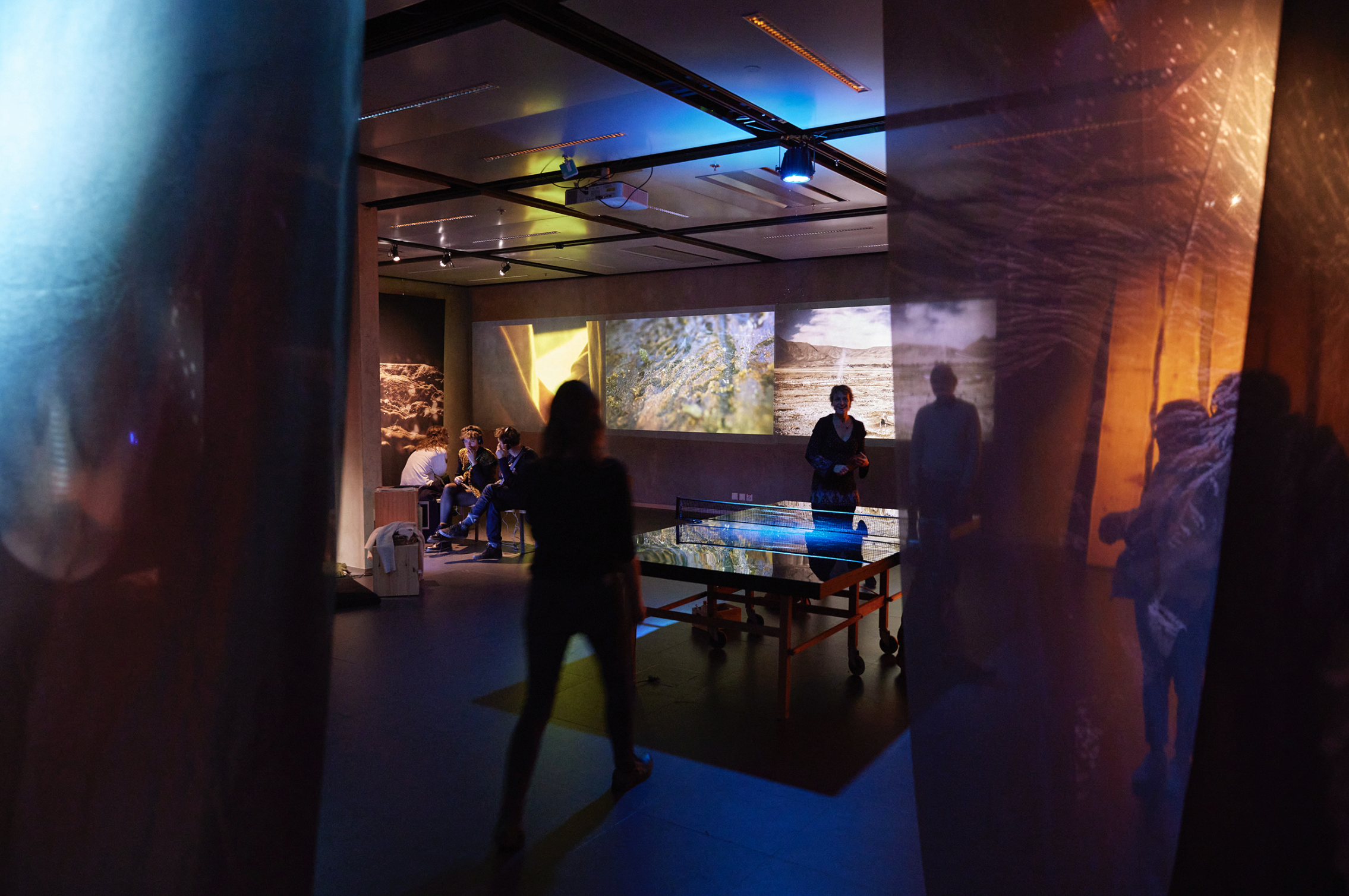



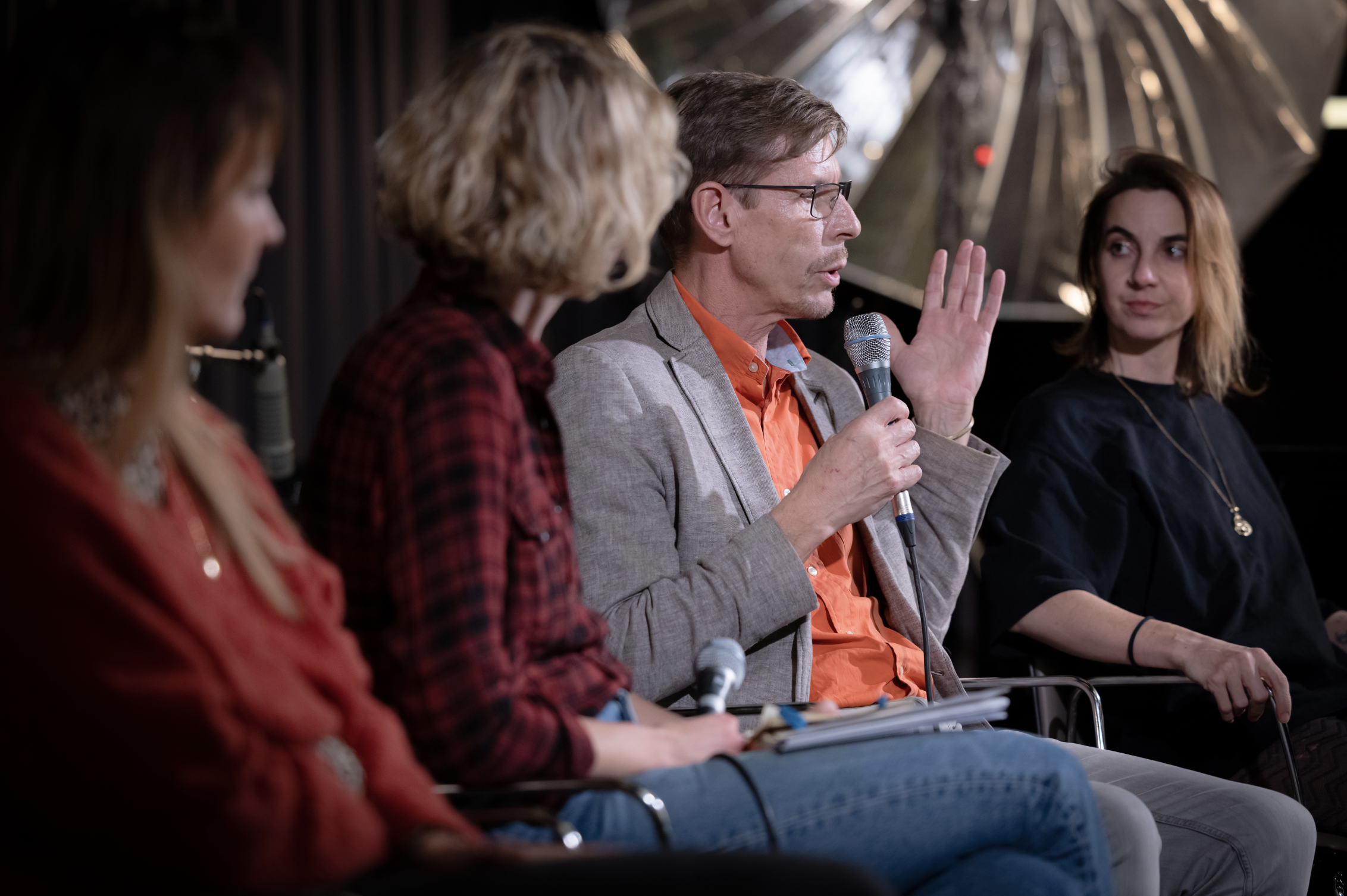

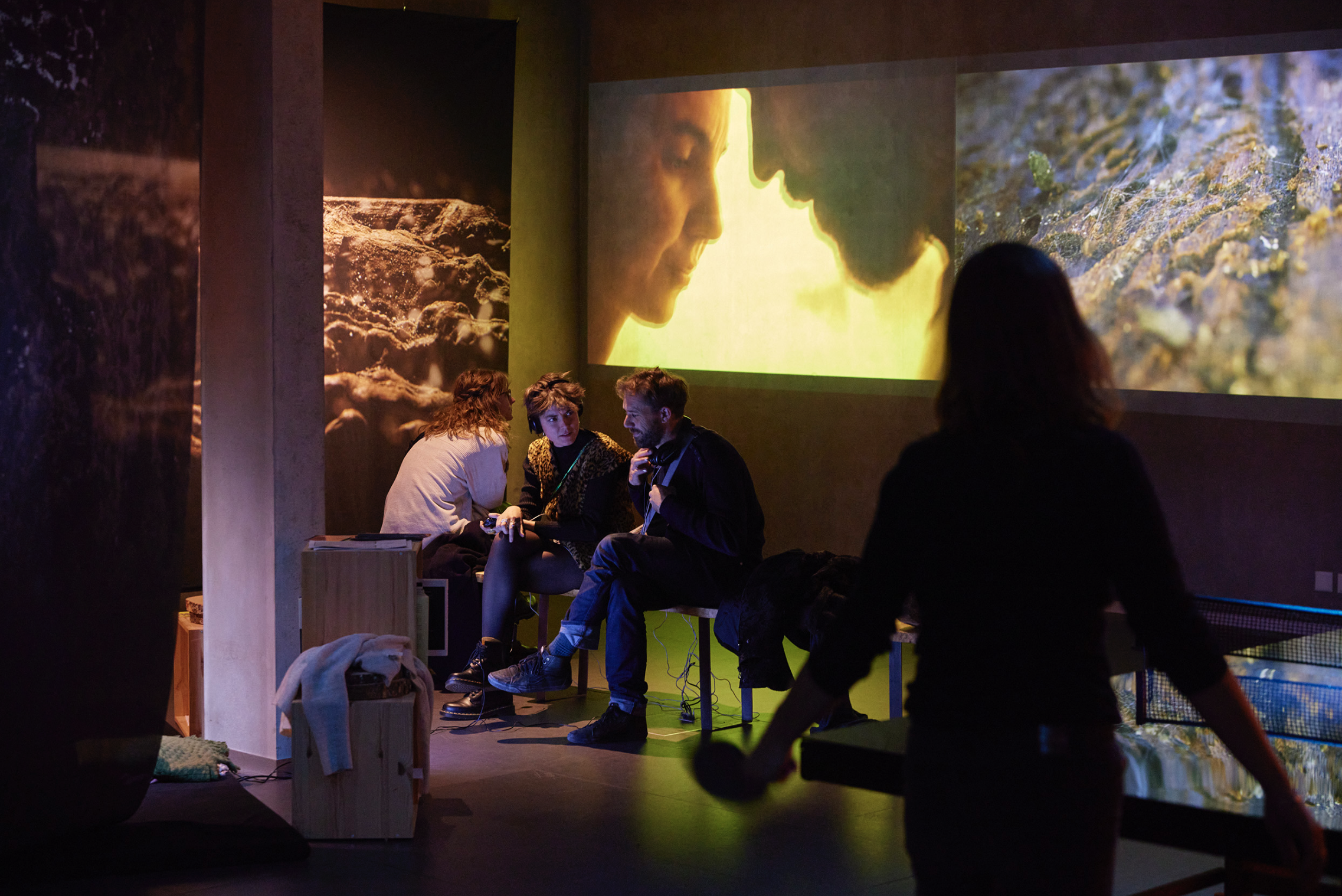


















IN BETWEEN
neuronal, human and social synchronisation and desynchronisation
ETTOL (hanging fabrics), 2023
Photographs
Created by Michael Cordey and Julie Semoroz using various organic structures - skin, plants, wood - and photographs of neurons produced during research by the University of Geneva at the ALICe at Wyss Center for Bio and Neuro Engineering on the Campus Biotech in Geneva.
FAT DIDI, 2023 - 18'25
Sculpture, light movements and sound piece
During the INTERSPECIES COMMUNICATION performance, we collected data from the oxygenation of the prefrontal cortices of Fabio Bergamaschi and Julie Semoroz using near infrared spectroscopy (NIRS). The data collected from the two performers generated all the light movements and a sound piece that make up the IN BETWEEN exhibition space.
MOUSE PAW, 2023 - 00'25 Video
Video of a mouse paw produced as part of the research of Daniel Huber, Associate Professor at the Faculty of Medicine, Department of Fundamental Neurosciences at the University of Geneva.
READING ROOM
Books resulting from research linked to the IN BETWEEN and DOUZE MILLE VINGT projects. Selected and made available by the artist.
PING PONG AND HCI - HUMAN CETACEANS INTERACTION, 2023 - 6'56
sound and interactive installation
Ping pong table and sound piece. Installation available to the public.
ORCAS TALK, 2021 - 11'55
Video
During a pilot scientific experiment off Skjervoy, Norway, in December 2021, Jörg Rychen, a scientist at the Institute of Neuroinfomatics at ETH Zurich, invited sound artist and performer Julie Semoroz to try to interact with killer whales and humpback whales by imitating their sounds and matching the rhythm of their vocalisations. The aim is to make them understand that the sounds we produce are not random, but are a reaction to their sounds.
It has been shown that cetaceans recognise themselves in a mirror. They recognise that the action of the mirror image is a direct reflection of their own actions. It was thought that by reflecting their acoustic behaviour, the animals might realise that this new sound source was linked to their own vocalisations. The team speculated that they might become curious and try to explore this new sound source, in the same way that children explore echoes when walking through a tunnel. Observations were then made to look for any altered or atypical behaviour that might indicate a reaction to the original stimulus.
When we interact with non-humans, we are obliged to change our point of view, to try to see things from the point of view of the animals with whom we are communicating. By carrying out such an experiment, it is possible to build a relationship and a bond, and not just to test the animals' reactions or decode their capacity for language in their natural environment. Science wants to understand the mechanisms of the world and/or decipher the code of languages. Art is a way of creating links and resonating with life. Both are research methods that can meet and exchange.
IN BETWEEN
synchronisation et désynchronisation aussi bien neuronale, qu’humaine et sociale
ETTOL (tissus suspendus), 2023
Photographies
Réalisées par Michael Cordey et Julie Semoroz avec diverses structures organiques — peau, plantes, bois — et photographies de neurones produites lors de recherches de l’Université de Genève au ALICe at Wyss Center for Bio and Neuro Engineering au Campus Biotech de Genève.
FAT DIDI, 2023 — 18’25
Sculpture, mouvements lumineux et pièce sonore.
Lors de la performance INTERSPECIES COMMUNICATION, nous avons collecté les données provenant de l’oxygénation des cortex préfrontaux de Fabio Bergamaschi et Julie Semoroz à l’aide de la spectros- copie proche infrarouge (NIRS). Les données récoltées des deux performeur.euses génèrent tous les mouvements lumineux ainsi qu’une pièce sonore, qui composent l’espace d’exposition IN BETWEEN.
MOUSE PAW, 2023 — 00’25
Vidéo
Vidéo d’une patte de souris réalisée dans le cadre des recherches de Daniel Huber, Professeur associé à la Faculté de Médecine, Département des Neurosciences Fondamentales de l’Université de Genève.
SALON DE LECTURE
Livres issus de la recherche liée aux projets IN BETWEEN et DOUZE MILLE VINGT. Sélectionnés et mis à disposition par l’artiste.
PING PONG ET HCI — HUMAN CETACEANS INTERACTION, 2023 — 6’56
Table de ping pong et pièce sonore. Installation à disposition du public.
ORCAS TALK, 2021 — 11’55
Vidéo
Lors d’une expérience scientifique pilote au large de Skjervoy, en Norvège, en décembre 2021, Jörg Rychen, scientifique à l’Institut de neuroinfomatique de l’ETH Zurich, a invité l’artiste sonore et performeuse Julie Semoroz à essayer d’interagir avec des orques et des baleines à bosse en imitant leurs sons et en s’alignant sur le rythme de leurs vocalisations. L’objectif est de leur faire comprendre que les sons que nous produisons ne sont pas aléatoires, mais qu’ils sont une réaction à leurs sons.
Il a été démontré que les cétacés se reconnaissent dans un miroir. Ils reconnaissent que l’action de l’image du miroir est un reflet direct de leurs propres actions. On a pensé qu’en reflétant leur compor- tement acoustique, les animaux pourraient se rendre compte que cette nouvelle source sonore est liée à leurs propres vocalisations. L’équipe a supposé qu’ils pourraient devenir curieux et essayer d’explorer cette nouvelle source sonore, de la même manière que les enfants explorent l’écho lorsqu’ils marchent dans un tunnel. Des observations ont été ensuite effectuées afin de rechercher un comportement modi- fié ou atypique qui pourrait indiquer une réaction au stimulus d’origine.
Lorsque nous interagissons avec des non-humains, nous sommes obligés de changer notre point de vue, d’essayer de voir les choses du point de vue des animaux avec lesquels nous communiquons. En réalisant une telle expérience, il est possible de construire une relation et un lien, et pas seulement de tester les réactions des animaux ou de décoder leur capacité de langage dans leur environnement natu- rel. La science veut comprendre les mécanismes du monde et/ou déchiffrer le code des langues. L’art est une voie ouverte pour créer des liens et entrer en résonance avec la vie. Les deux sont des méthodes de recherche qui peuvent se rencontrer et échanger.
-
Venue of creation: SEU - Salle d'exposition de l'Université de Genève
Sound design and composition: Julie Semoroz
Guest artists: Michael Cordey, Joseph Simon
Technical direction: Julie Semoroz
Technical and construction: Wendy Gaze, Emma Souharce, Amand Leyvraz
Computer programming: Thomas Köppel, Daniel Sziemasko and Coralie Debracque
Set design and construction: Wendy Gaze
Theoretical contributors: Didier Grandjean, Michael Cordey
Communication: University of Geneva, CISA and NCCR Evolving Language
Poster photo: Michael Cordey,
Poster design: Rob Van Leijsen
Production and distribution manager: Julie Semoroz
Production assistant: Emma Souharce
Production: Association Motonomy
Administration & accounts: Julie Semoroz and Nathalie Wenger
-
Supported by University of Geneva - CISA, NCCR Evolving Language, SNSF, Pro Helvetia, Nicati - de Luze Foundation, Leenaards Foundation, Ernst Göhner Foundation, FEEIG
Partners: Le musée d'ethnographie de Genève, ALICe at Wyss Center for Bio and Neuro Engineering
Coproduction and partners 11 November : Ensemble Contrechamps, City of Geneva, Musée d'ethnographie
Residencies, partners and hosting since 2021 : Le Dansomètre / Campus Biotech & CISA with Professor Didier Grandjean and Coralie Debracque / BIOPARC with the support of the NCCR Evolving language and grant from the City and State of Geneva, University of Zürich - Marta Manser's team on meerkats / Orcas Talk, residency in Norway, research project on human-cetacean inter-species vocalisation with researcher Jörg Rychen, ETH Zurich / NIRS with Coralie Debracque, campus Biotech-Kzern-CISA Unversité de Genève
Acknowledgements: Carole Varone, Emilie Wyss, Didier Grandjean, Manuela Filipa, Coralie Debracque, Léonardo Ceravolo, Dimitri Delcourt, Daniel Sziemasko, Alexandra Charvet et Jean-Luc Sudan, Laura Batti, Daniel Huber, Stéphane Fahrion, Sandrine Pelletier, Carl June, Pauline Cancela, Celia Lazzarotto, Carole Varone, Stefanao Politi, Julie Monot
-
IN BETWEEN
A creation by the artist Julie Semoroz
From 10 - 26 November 2023
University Exhibition Hall
Bd Carl-Vogt 66
Monday to Friday, 12pm to 2pm and 4pm to 7pm
Saturday-Sunday, 2pm-6pm
INFORMATION
Free admission to all events, limited capacity for concerts and workshops
https://unige.ch/-/inbetween
VENUEShttps://unige.ch/-/inbetween
SEU - University of Geneva Exhibition Hall, Bd Carl-Vogt 66 1205 Geneva
MEG - Musée d'ethnographie de Genève, Bd Carl-Vogt 67, 1205 Geneva
EVENTS
09 November 23 - opening of In Between SEU
11 November 23 - concerts and discussion, MEG auditorium / with Julie Semoroz and the ensemble Contrechamps / Didier Grandjean, Emilie Genty and Aurélie Coulon
17 November 23 - Interspecies communication performance, MEG garden with Fabio Bergamaschi, Julie Semoroz and Joseph Simon
18 November 23 - performance Interspecies communication, MEG garden with Fabio Bergamaschi, Julie Semoroz and Joseph Simon
19 November 23 - workshop Body Resonant, SEU with Aude Barrio, Didier Grandjean and Julie Semoroz
24 November 23- performance In Between, SEU with Julie Semoroz
25 November 23 - performance In Between, SEU with Julie Semoroz
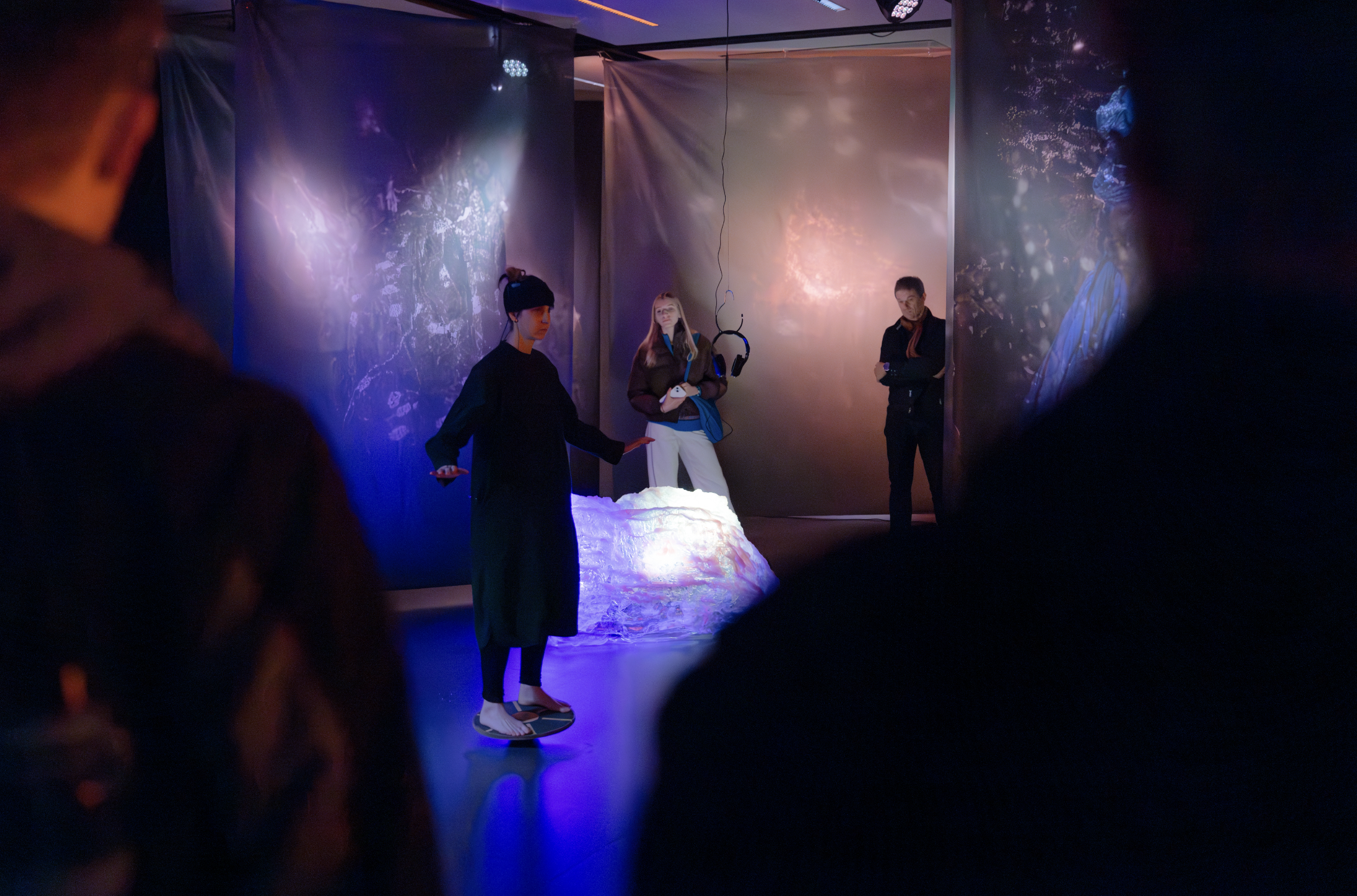
FAT DIDI
Performance
FAT DIDI
In IN BETWEEN, Julie Semoroz explores neuronal, human and social synchronisation and desynchronisation. The works presented question the way in which human expectations and representations interact with the way we connect and create links with both humans and non-humans. The works immerse the public in a space of sound and light, inviting them to contemplate and question the way they vibrate and (dis)synchronise with others and with their environment. Here, the artist evokes her many exchanges with scientists, as well as her interactions with wild and captive animals, through a range of multidisciplinary works based on interviews and research by CISA and the NCCR Evolving Language.
To complete her research, Julie Semoroz is proposing a performance with the sculpture FAT DIDI in which the artist is linked to fNIRS technology. Data from the oxygenation of her prefrontal cortex is interpreted in real time in the form of light reacting with photosensitive sensors producing sound impulses. She plays with light and shadow, balancing on a disc known as a Mexican hat.
In this way, she explores proprioception and involuntary inner and outer movements, revealing a sensory poetry based on perpetual movement and homeostasis. A story of neuronal synchronisation and desynchronisation, of chaos and harmony.
FAT DIDI
Dans la création IN BETWEEN, Julie Semoroz explore la synchronisation et la désynchronisation aussi bien neuronales, qu’humaines et sociales. Les œuvres présentées interrogent la manière dont les attentes et les représentations humaines interagissent avec notre façon de nous connecter et de créer du lien aussi bien avec des humains que des non-humains. Les œuvres plongent le public dans un espace son et lumière l’invitant à contempler et à s’interroger sur sa façon de vibrer et de se (dé)synchroniser avec les autres et avec son environnement. Ici, l’artiste évoque ses nombreux échanges avec des scientifiques, ainsi que ses interactions avec des animaux sauvages et captifs, à travers différentes œuvres pluridisciplinaires qui ont été réalisées à partir d’entretiens et des recherches du CISA et du PRN Evolving Language.
Pour compléter sa recherche, Julie Semoroz propose une performance avec la sculpture FAT DIDI où l'artiste est reliée à la technologie fNIRS. Les données provenant de l’oxygénation de son cortex préfrontal sont interprétées en temps réel sous forme de lumière réagissant avec des senseurs photosensibles produisant des impulsions sonores. Elle joue avec l’ombre et la lumière en équilibre sur un disque appelé aussi chapeau mexicain.
Elle explore ainsi la proprioception, et les mouvements intérieurs et extérieurs involontaires dévoilant une poésie sensorielle autour du mouvement perpétuel et de l'homéostasie. Une histoire de synchronisation et désynchronisation neuronale, une histoire de chaos et d'harmonie.
-
Venue of creation: SEU - Salle d'exposition de l'Université de Genève
Sound, light design and composition: Julie Semoroz
Technical direction: Julie Semoroz
Technical assistant: Amand Leyvraz
Technical and construction: Wendy Gaze, Emma Souharce, Amand Leyvraz
Computer programming: Thomas Köppel, Daniel Sziemasko and Coralie Debracque
Set design and construction: Wendy Gaze
Theoretical contributors: Didier Grandjean, Michael Cordey
Communication: University of Geneva, CISA and NCCR Evolving Language
Production and distribution manager: Julie Semoroz
Production assistant: Emma Souharce
Production: Association Motonomy
Administration & accounts: Julie Semoroz and Nathalie Wenger
-
Supported by University of Geneva - CISA, NCCR Evolving Language, SNSF, Pro Helvetia, Nicati - de Luze Foundation, Leenaards Foundation, Ernst Göhner Foundation, FEEIG
Partners: Le musée d'ethnographie de Genève, ALICe at Wyss Center for Bio and Neuro Engineering
Residencies, partners and hosting since 2021 : Le Dansomètre / Campus Biotech & CISA with Professor Didier Grandjean and Coralie Debracque / BIOPARC with the support of the NCCR Evolving language and grant from the City and State of Geneva, University of Zürich - Marta Manser's team on meerkats / Orcas Talk, residency in Norway, research project on human-cetacean inter-species vocalisation with researcher Jörg Rychen, ETH Zurich / NIRS with Coralie Debracque, campus Biotech-Kzern-CISA Unversité de Genève
Acknowledgements: Carole Varone, Emilie Wyss, Didier Grandjean, Manuela Filipa, Coralie Debracque, Léonardo Ceravolo, Dimitri Delcourt, Daniel Sziemasko, Alexandra Charvet et Jean-Luc Sudan, Laura Batti, Daniel Huber, Stéphane Fahrion, Sandrine Pelletier, Carl June, Pauline Cancela, Celia Lazzarotto, Carole Varone, Stefano Politi, Julie Monot
-
24.11 SEU - University of Geneva Exhibition Hall
25.11 SEU - University of Geneva Exhibition Hall
FAT DIDI
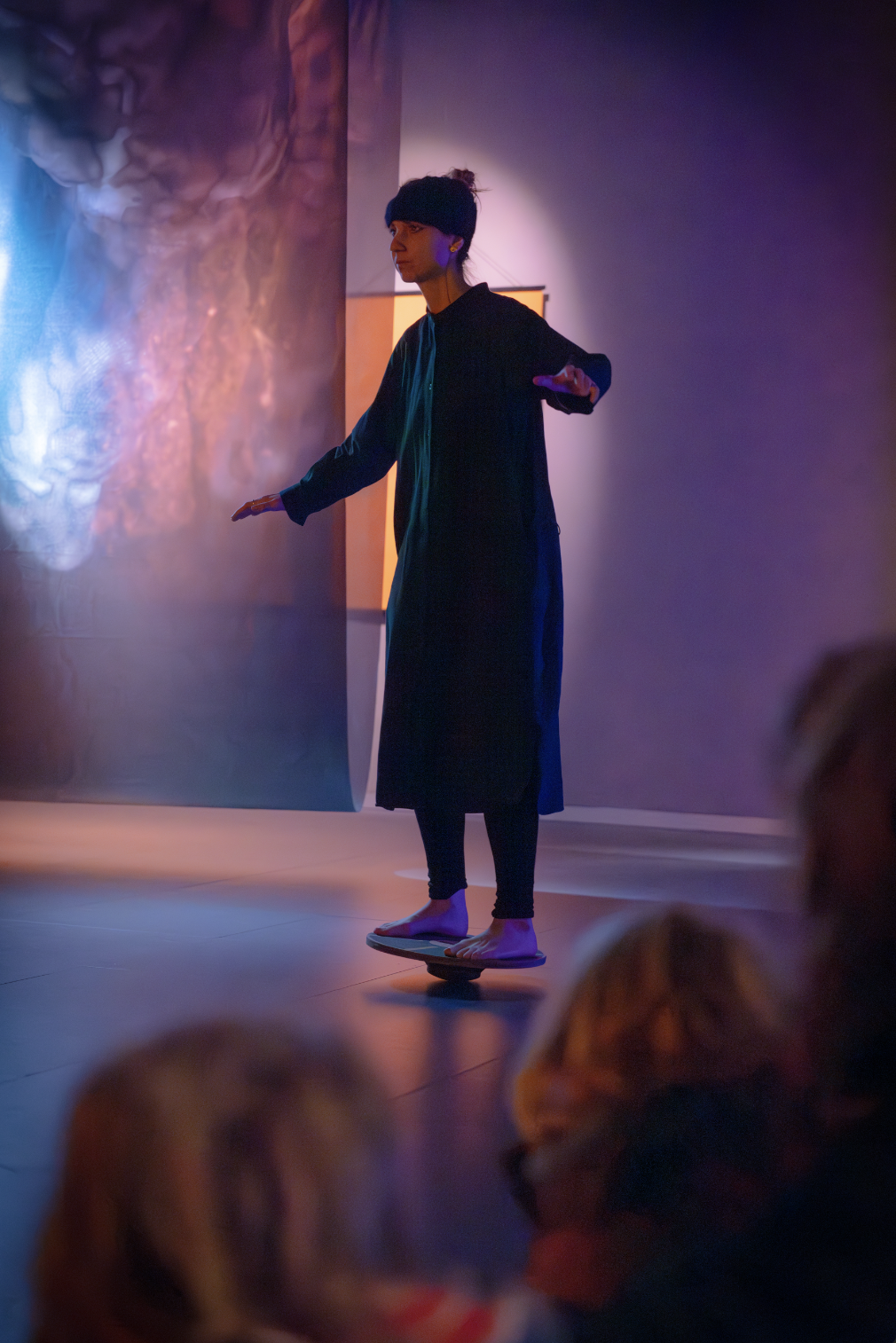
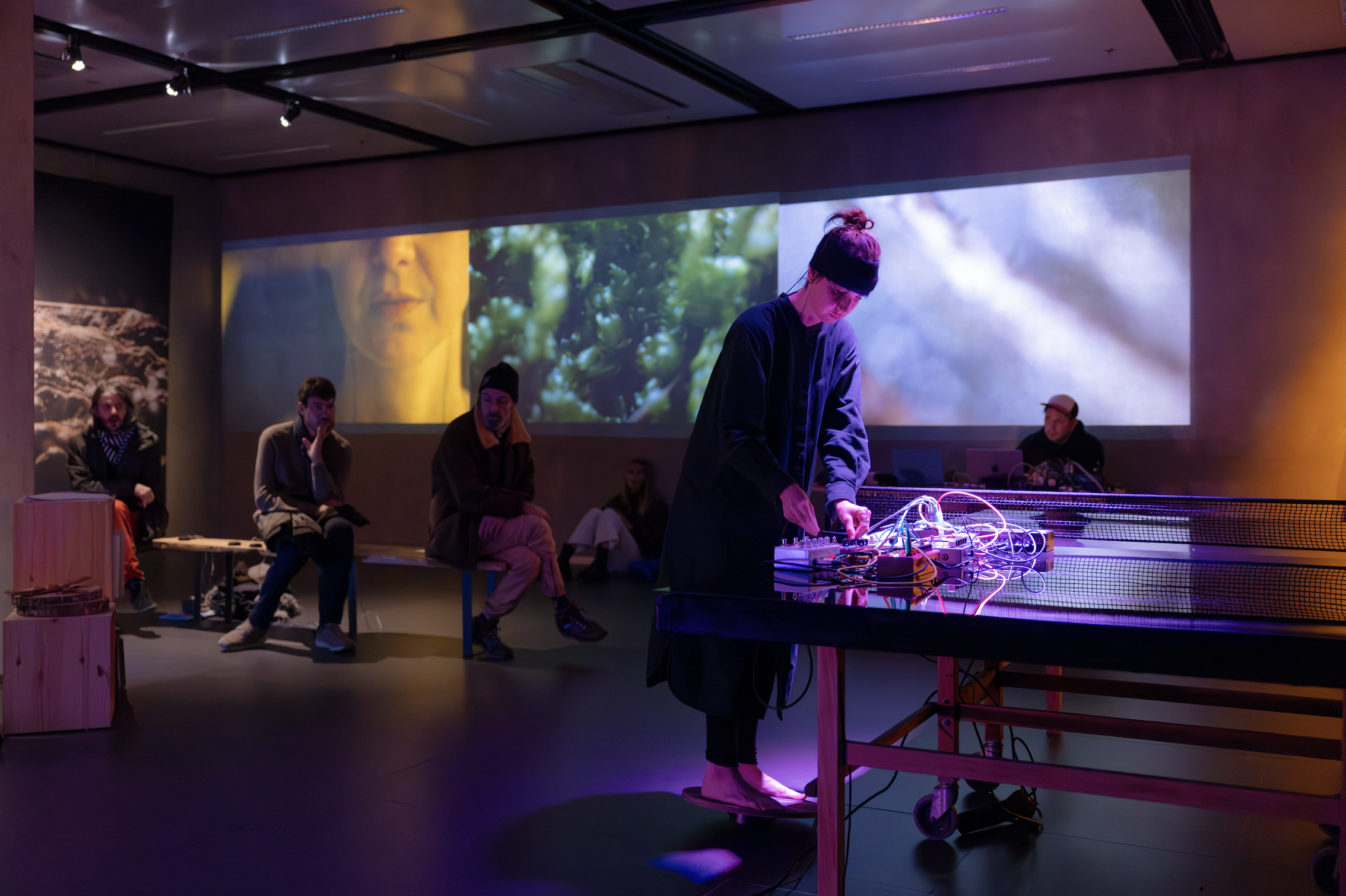





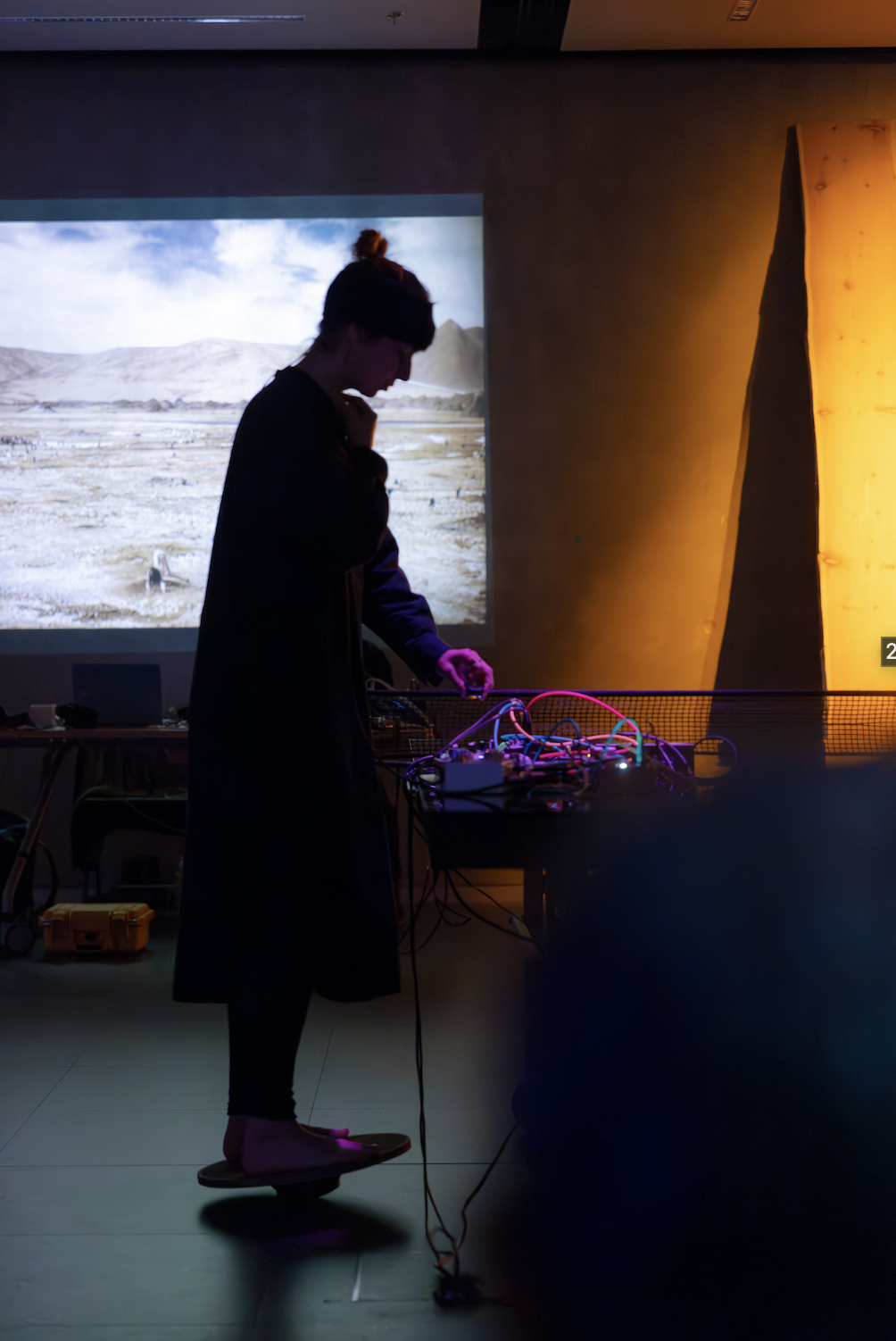
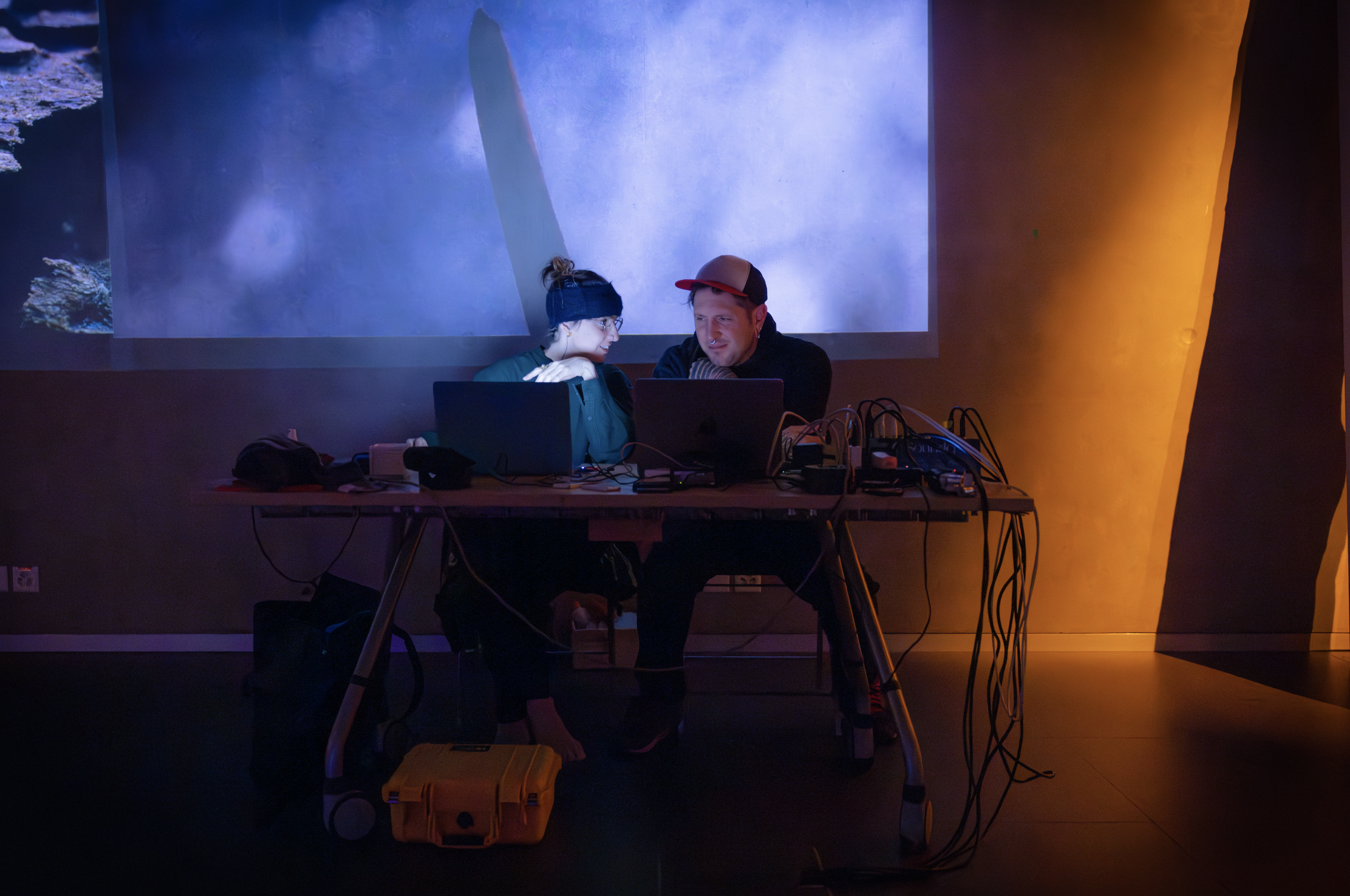
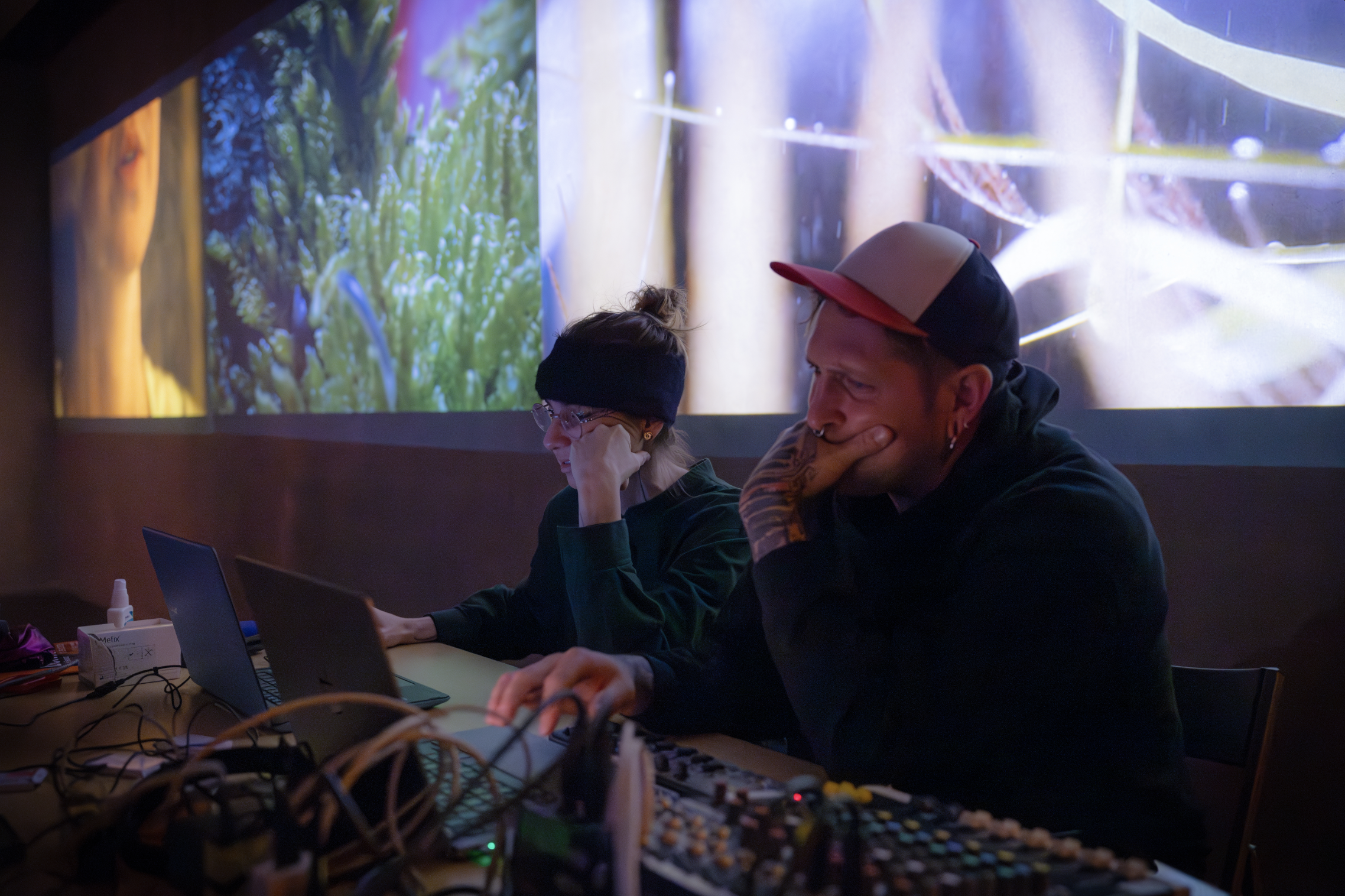
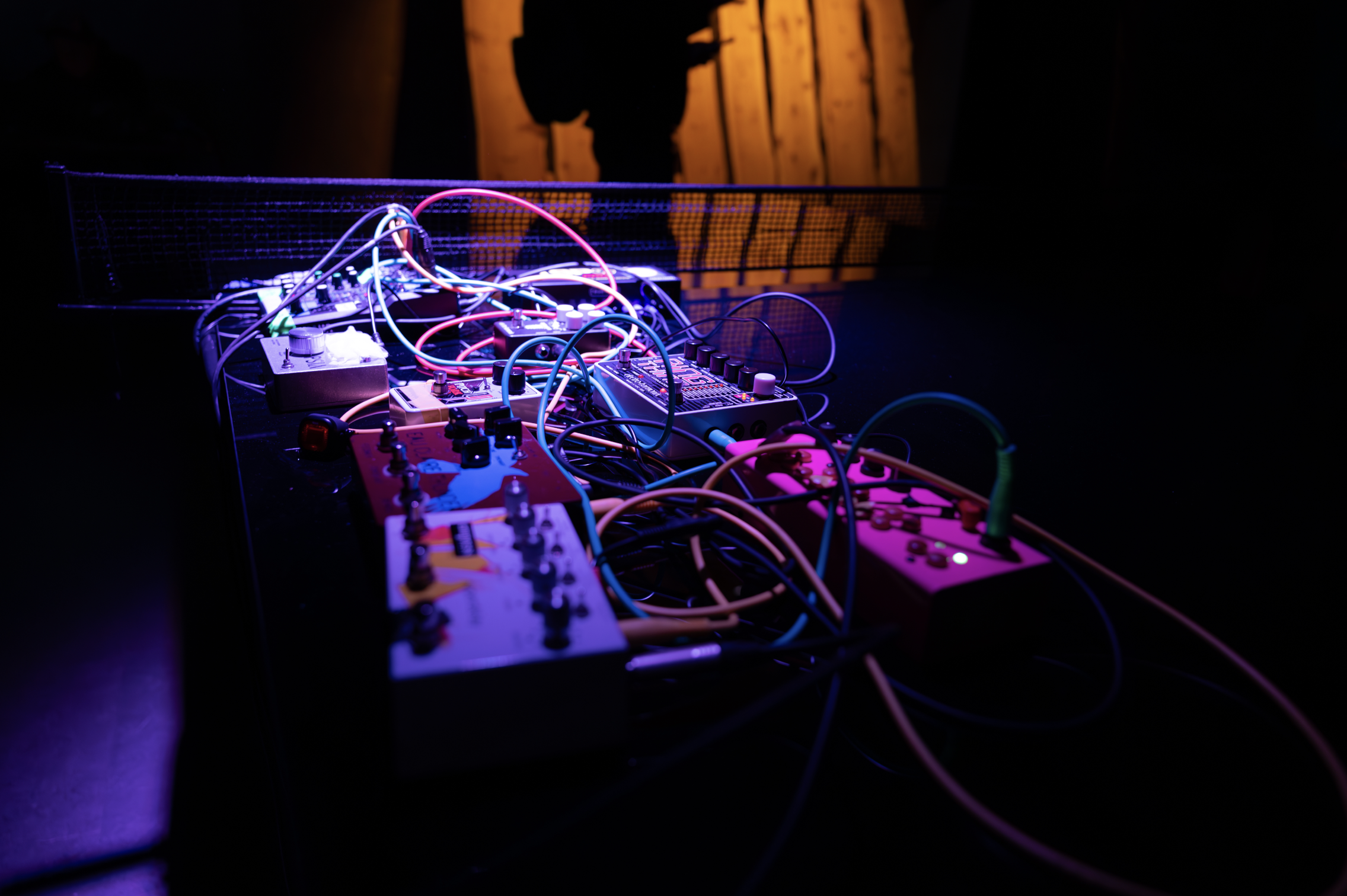


RESEARCH
Concerts, workshops, performances, rencontres et tables rondes
CONCERTS, WORKSHOPS, PERFORMANCES, MEETINGS AND ROUND TABLE
Throughout the exhibition, a series of concerts, discussions, performances and workshops have been organised, with Julie Semoroz collaborating with Fabio Bergamaschi, Joseph Simon, Thierry Debons, Maximilian Haft, Hans Egidi , Katarina Leskovar, Aude Barrio, Emilie Genty and Didier Grandjean.
CONCERTS, WORKSHOPS, PERFORMANCES, RENCONTRES ET TABLE RONDE
Durant la durée de l’exposition, une série de concerts, de discussions, de performances et workshop ont rythmé l’exposition où l’artiste Julie Semoroz collabore notamment avec Fabio Bergamaschi, Joseph Simon, Thierry Debons, Maximilian Haft, Hans Egidi , Katarina Leskovar, Aude Barrio, Emilie Genty et Didier Grandjean.

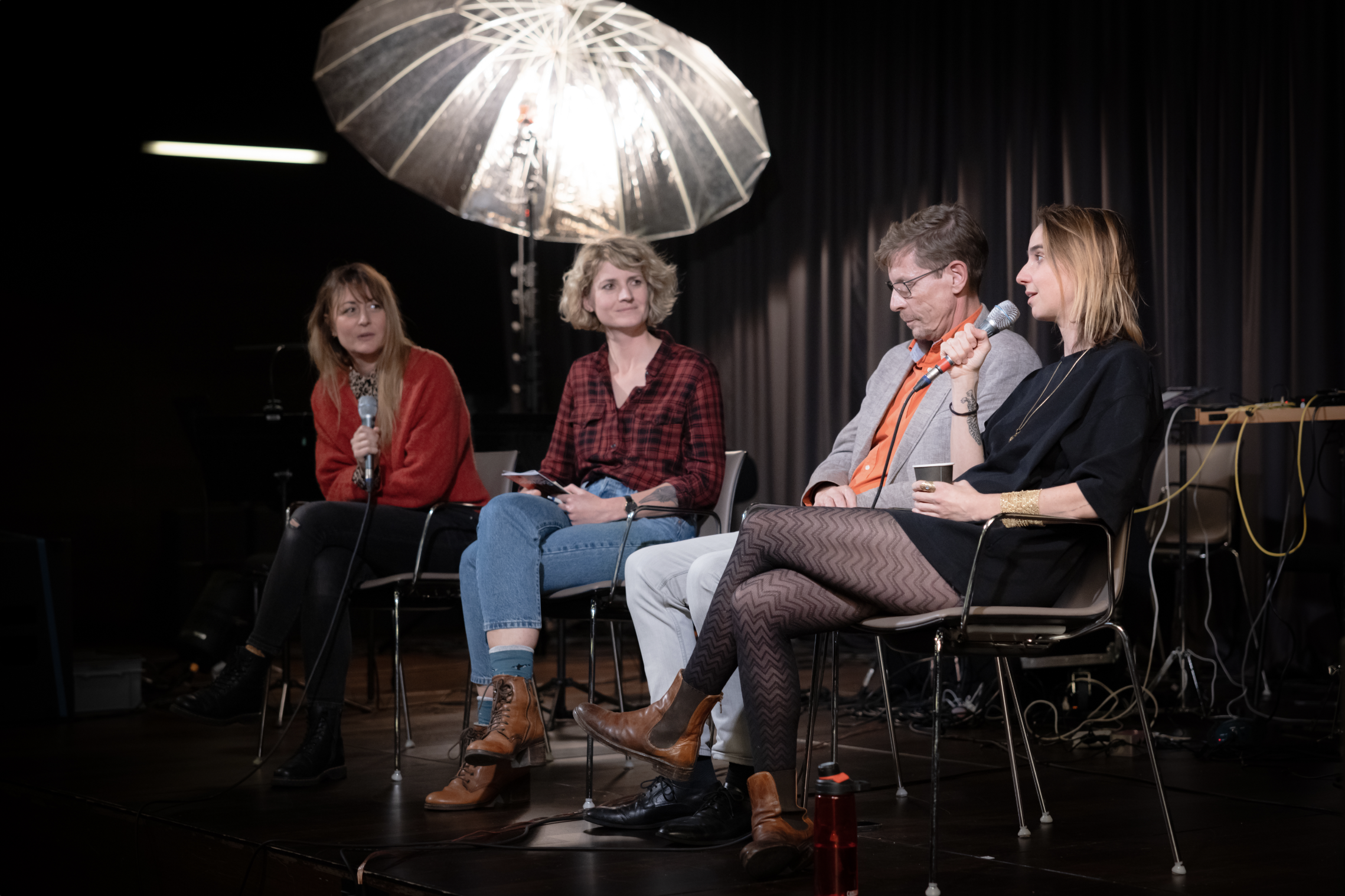


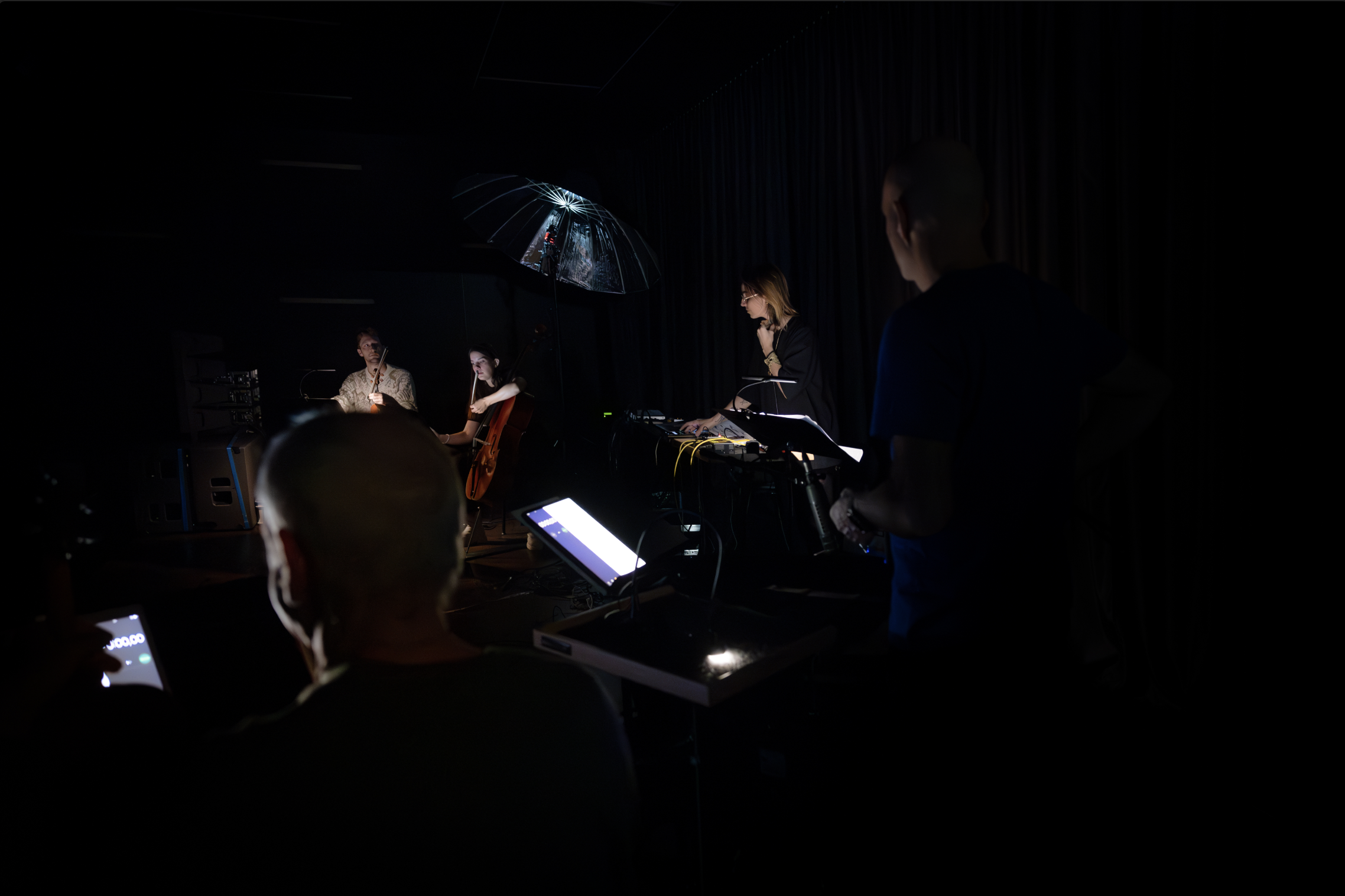
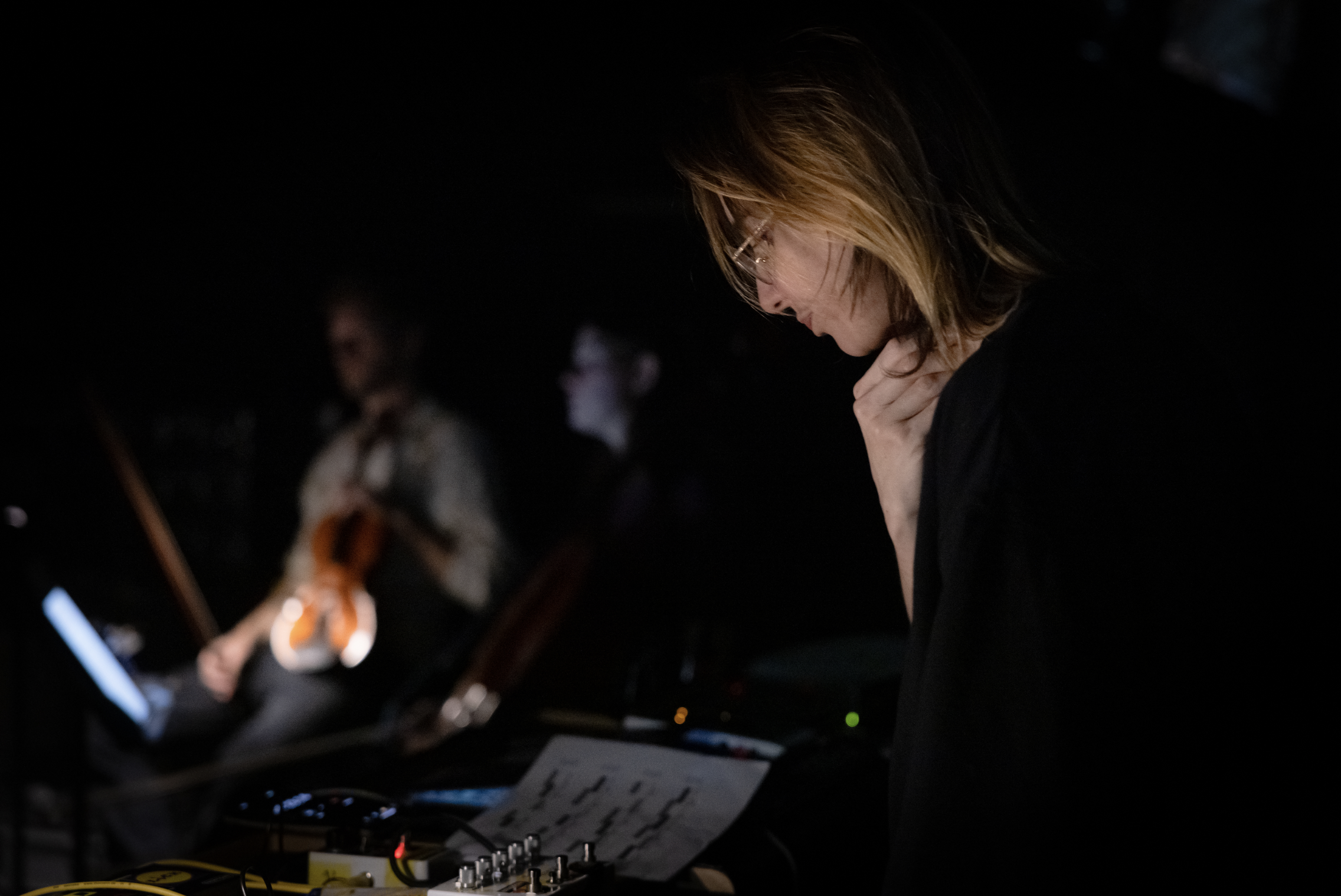




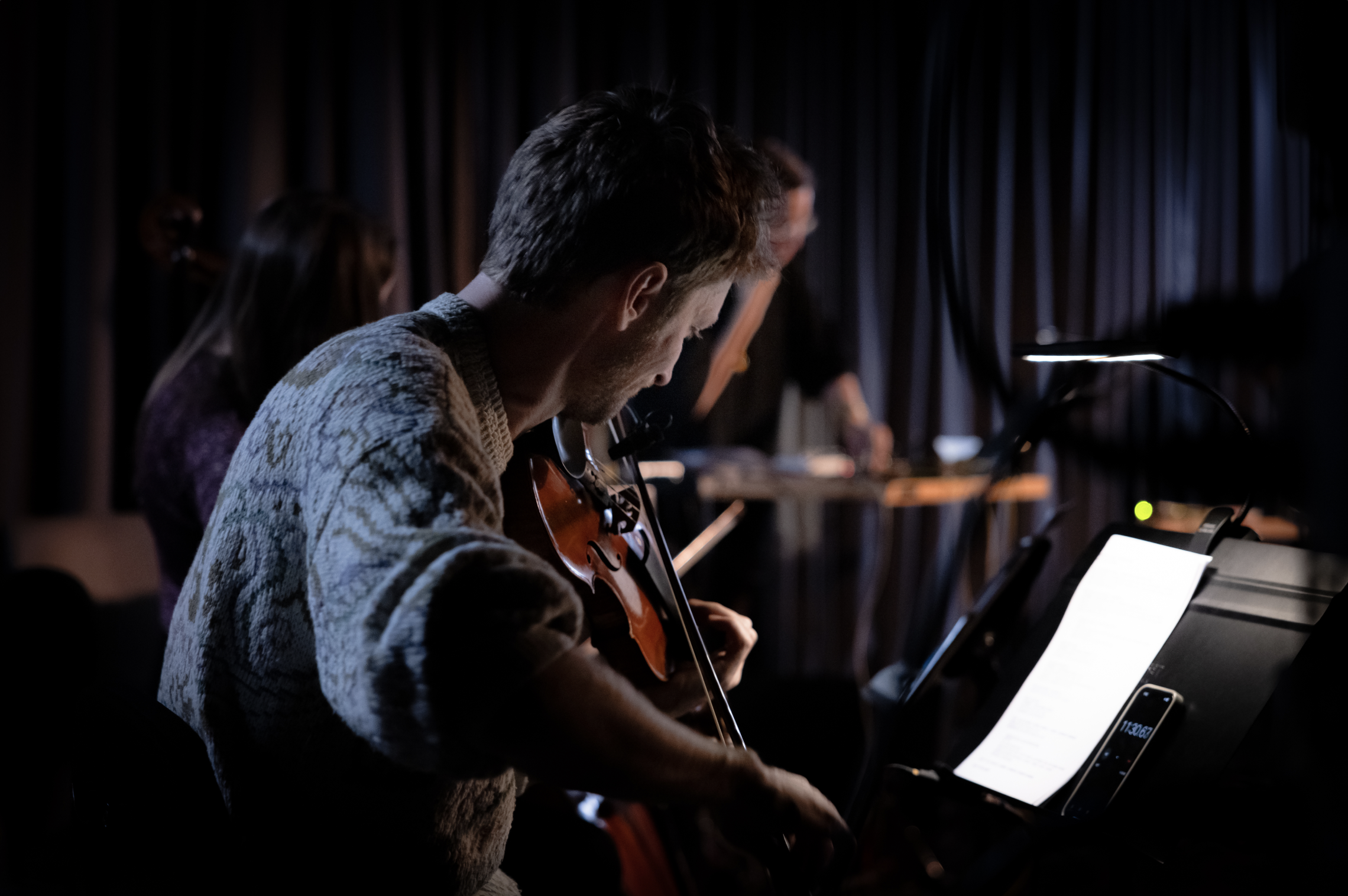


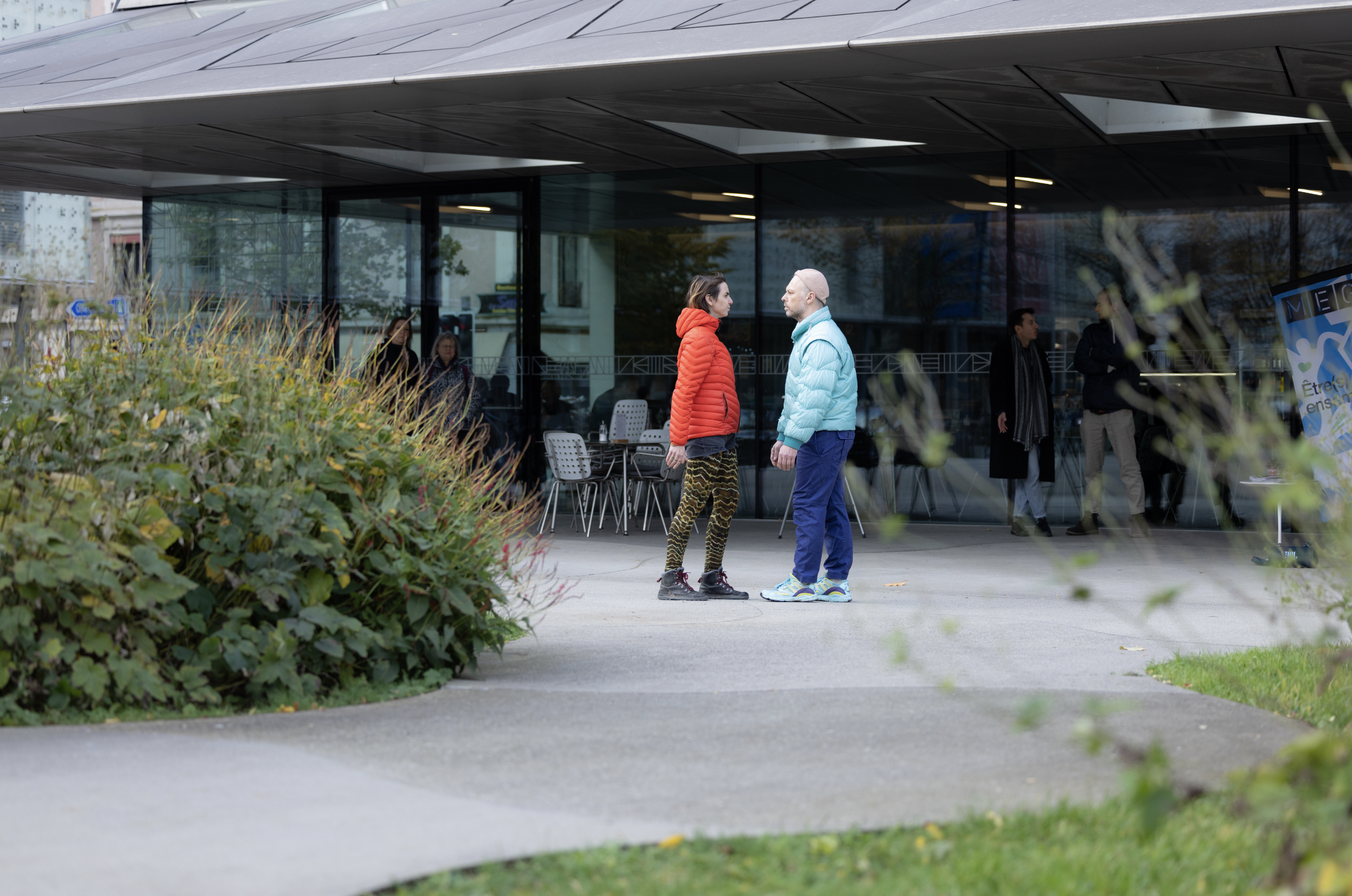


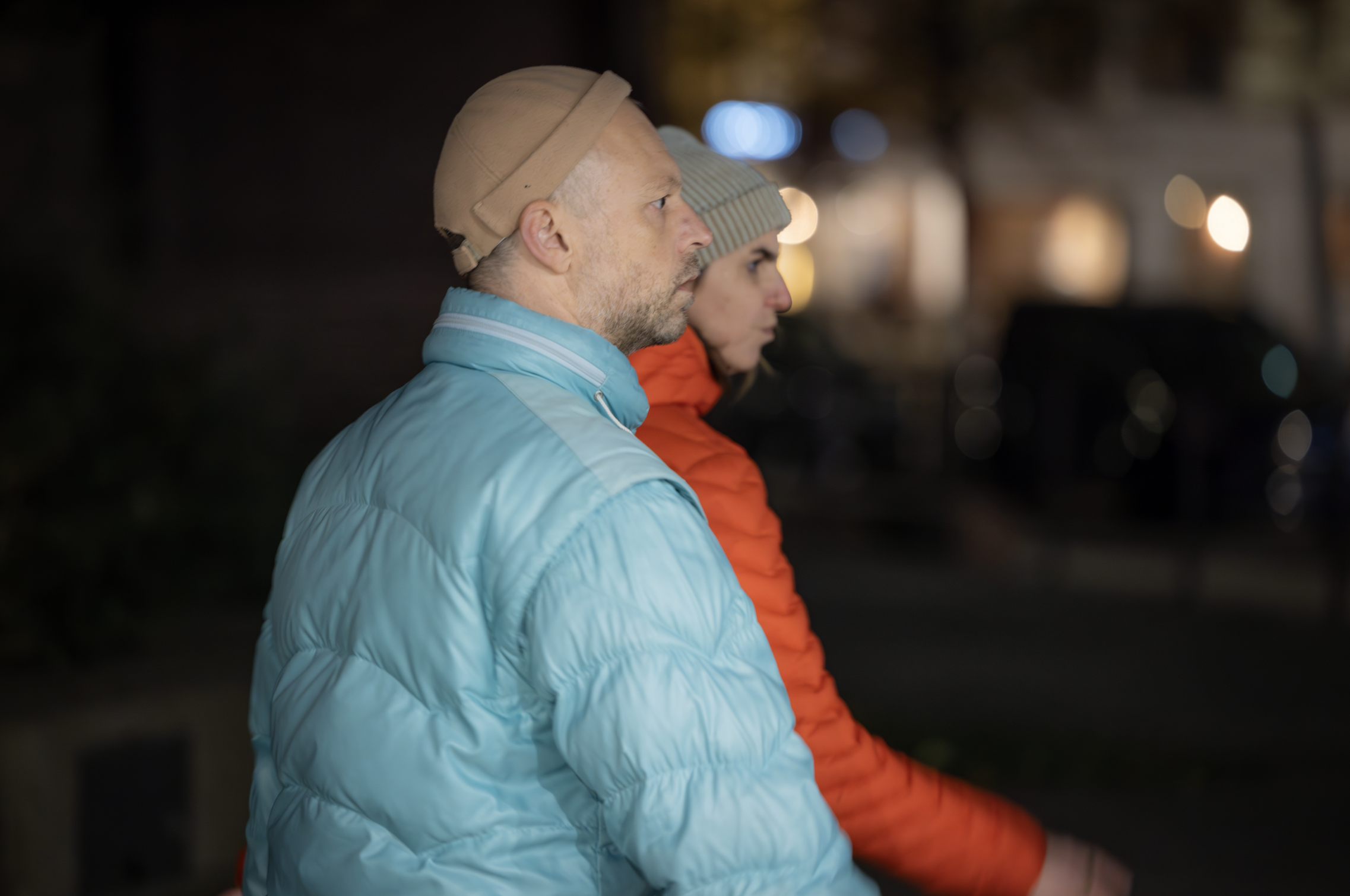
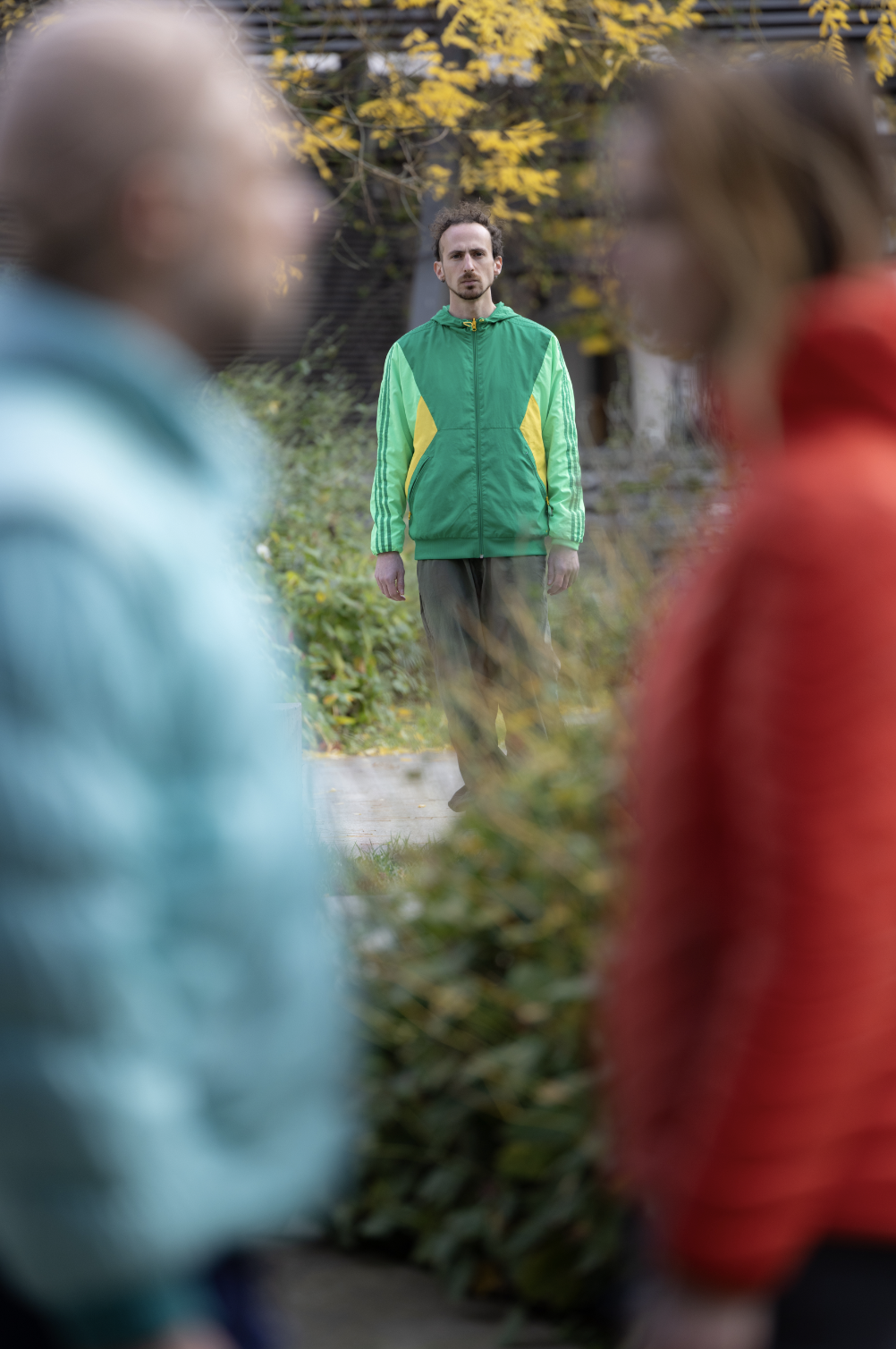

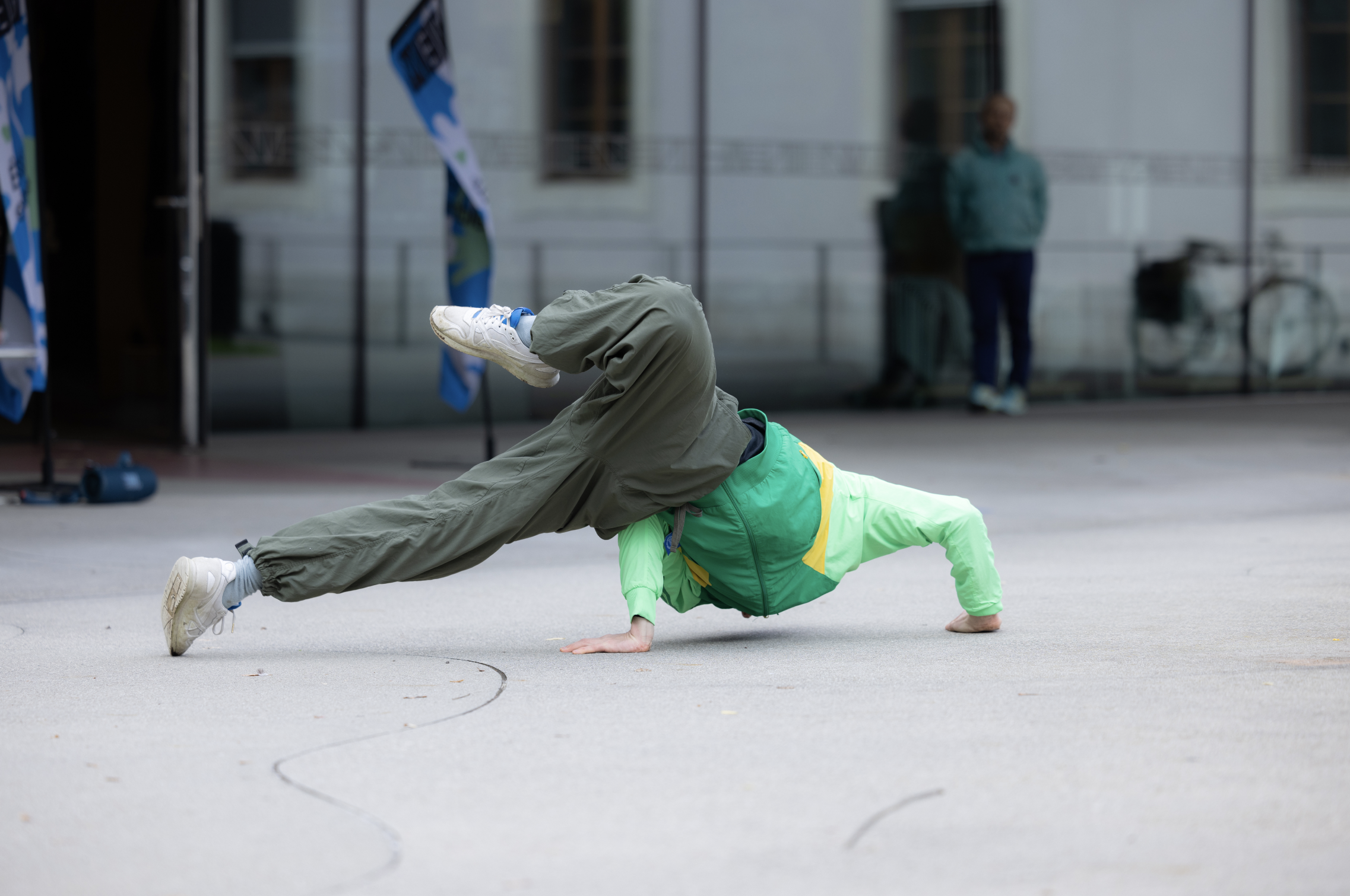
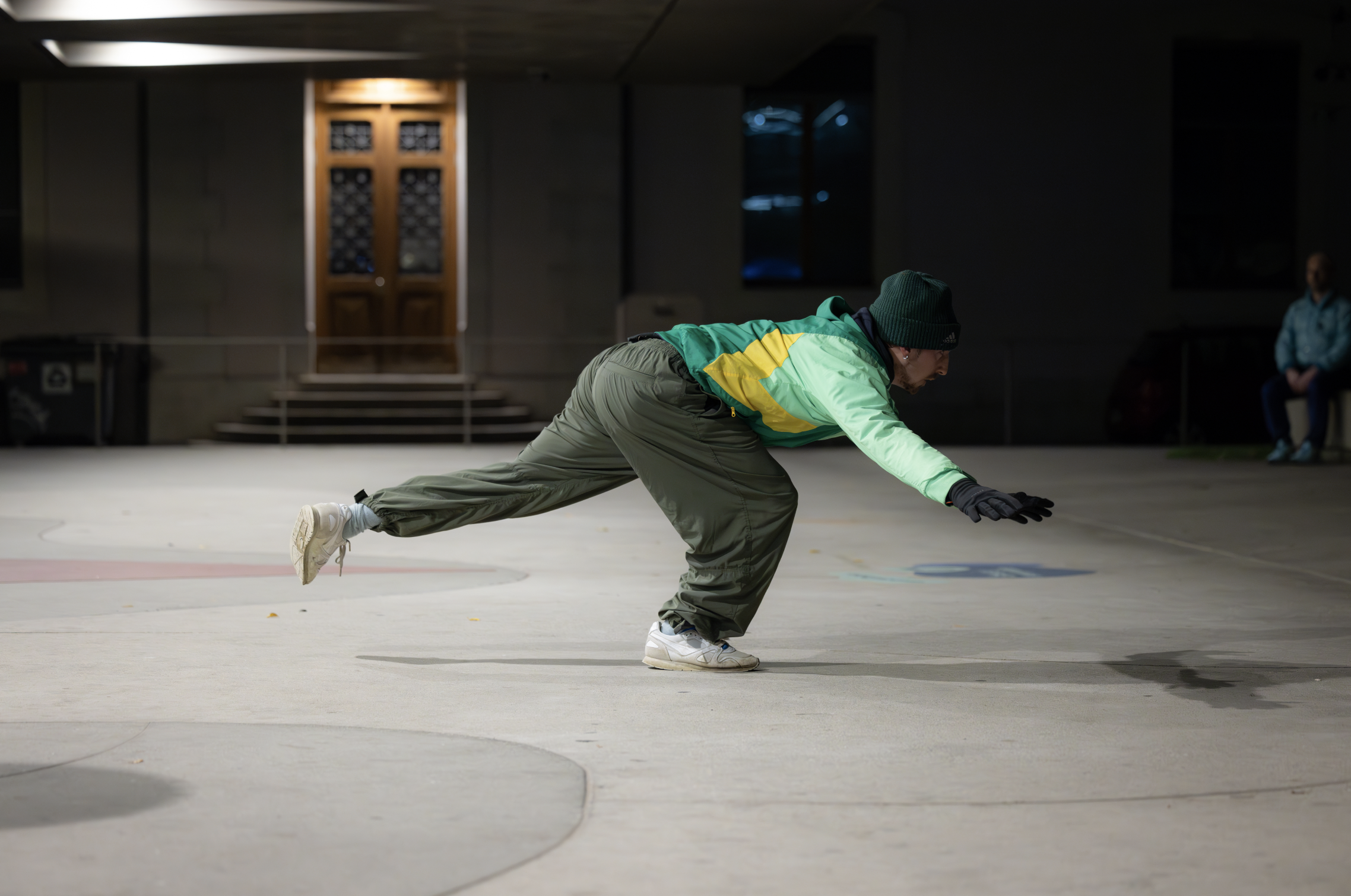
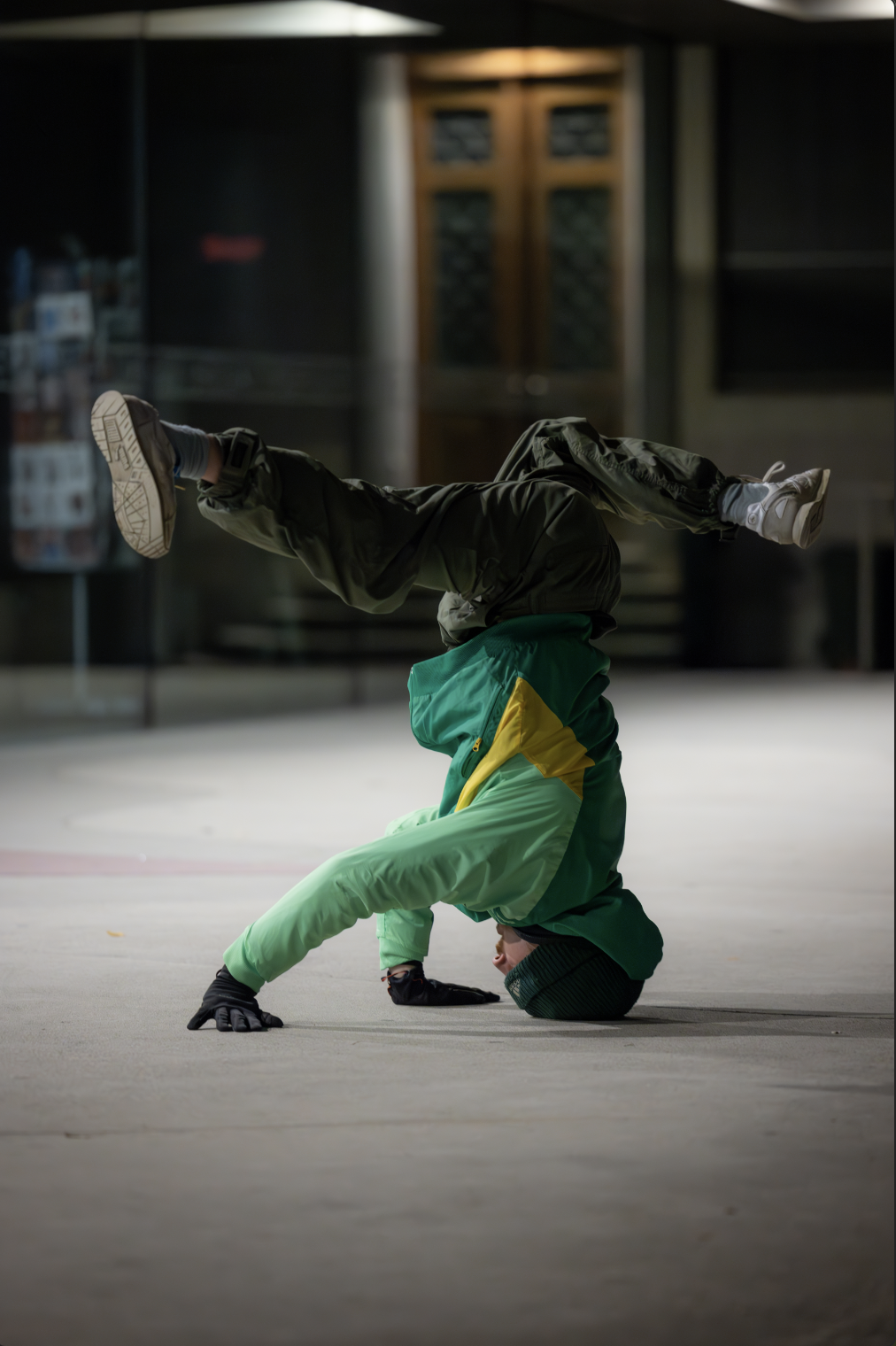
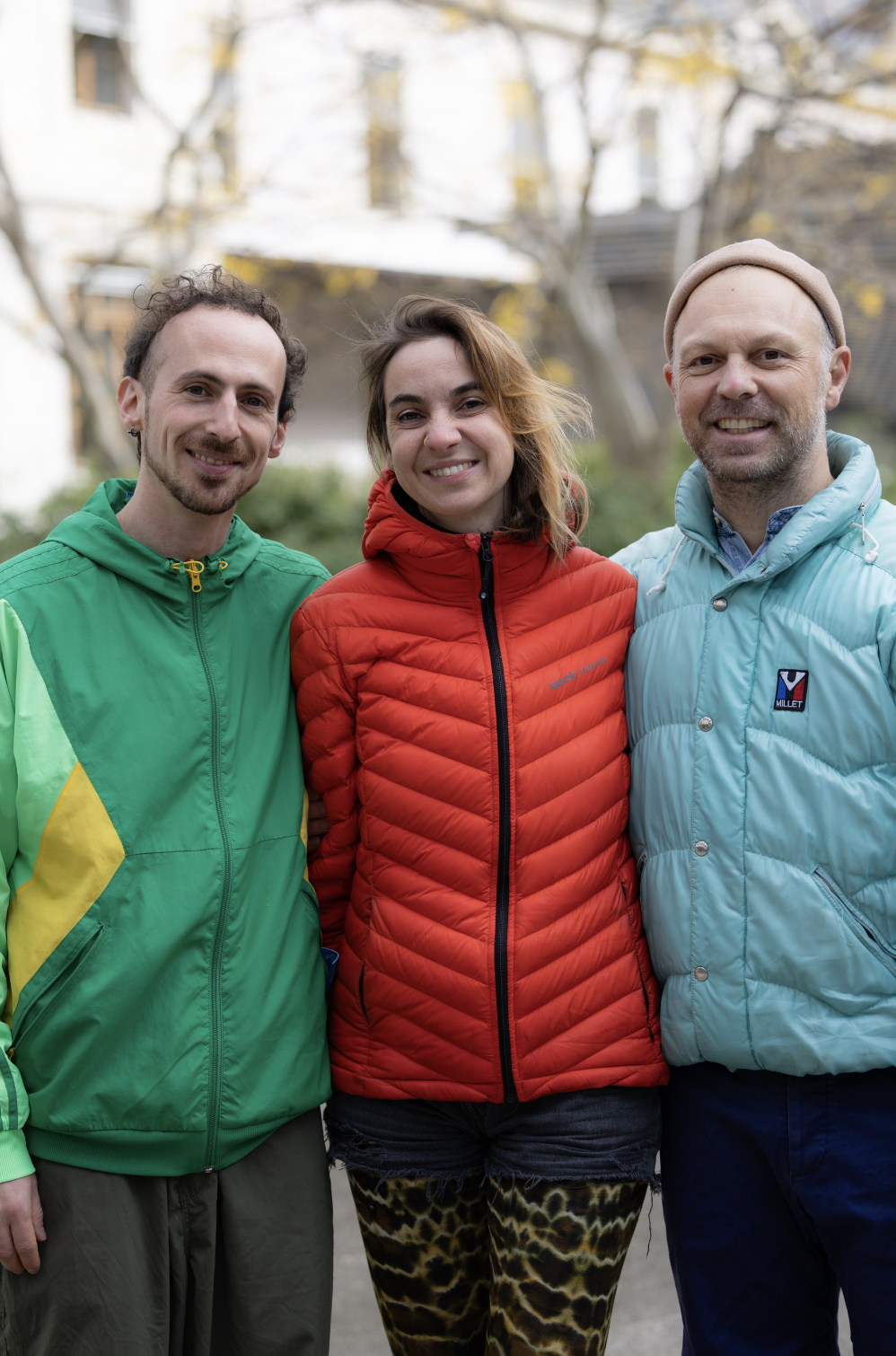
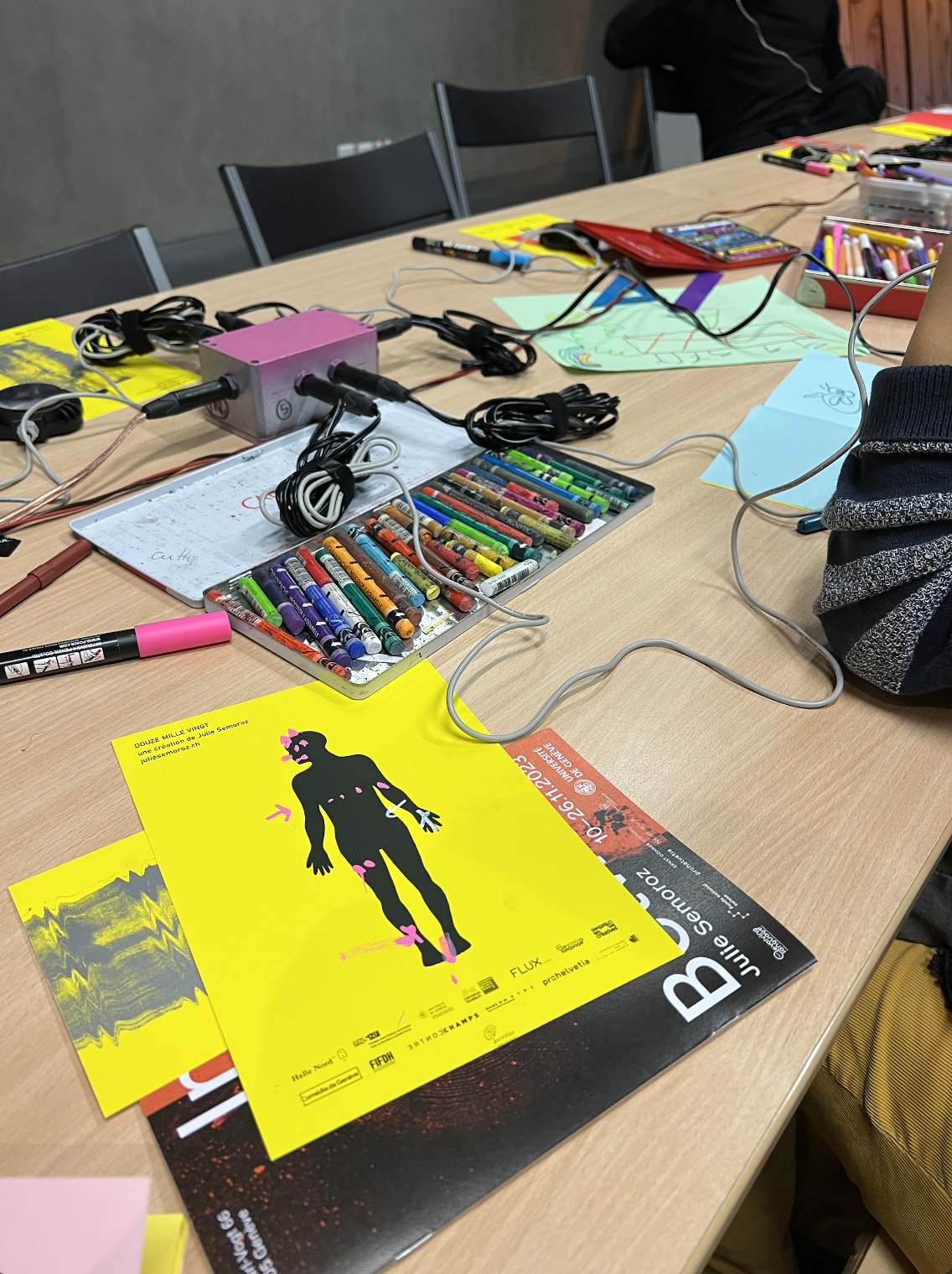
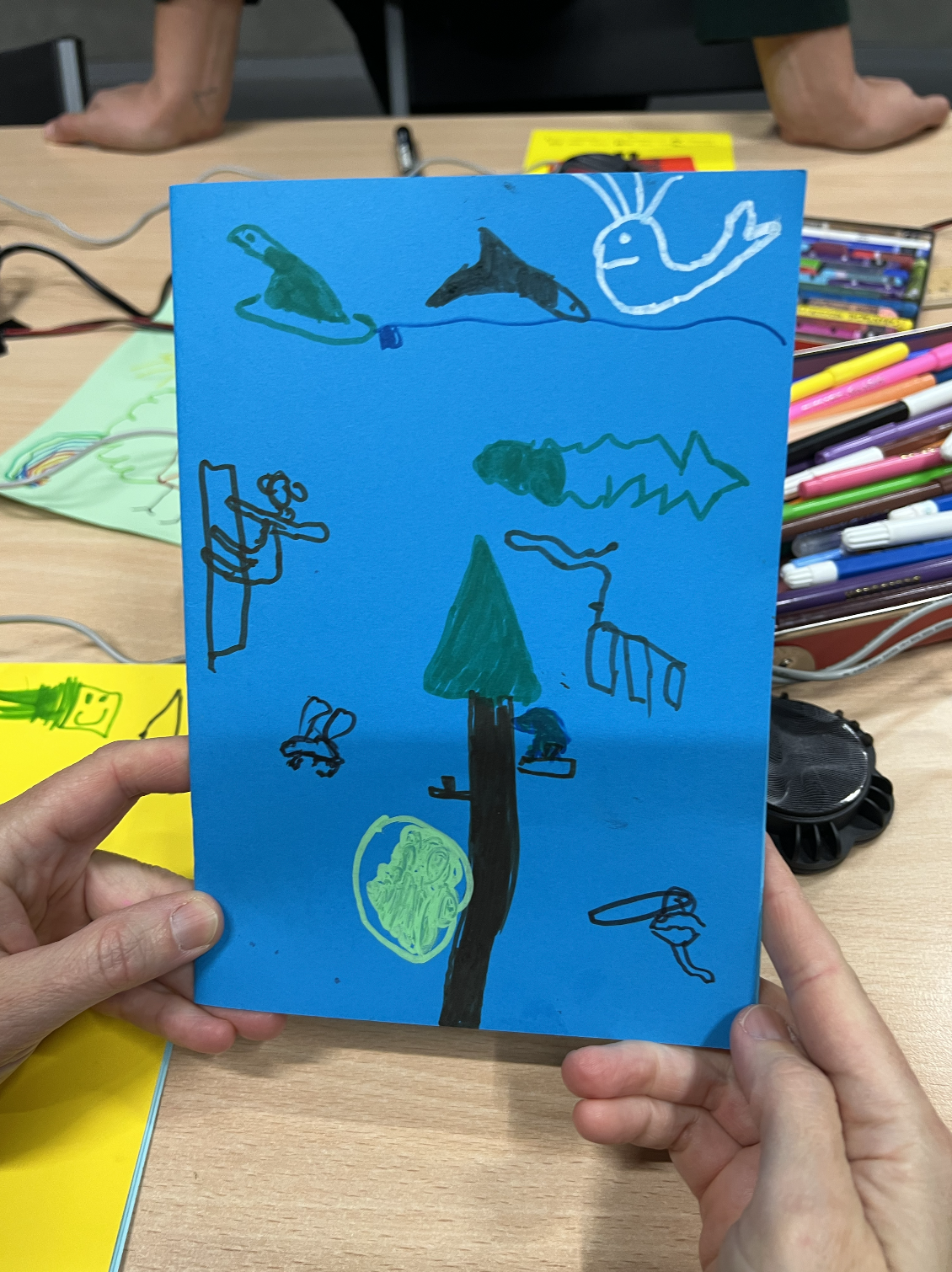
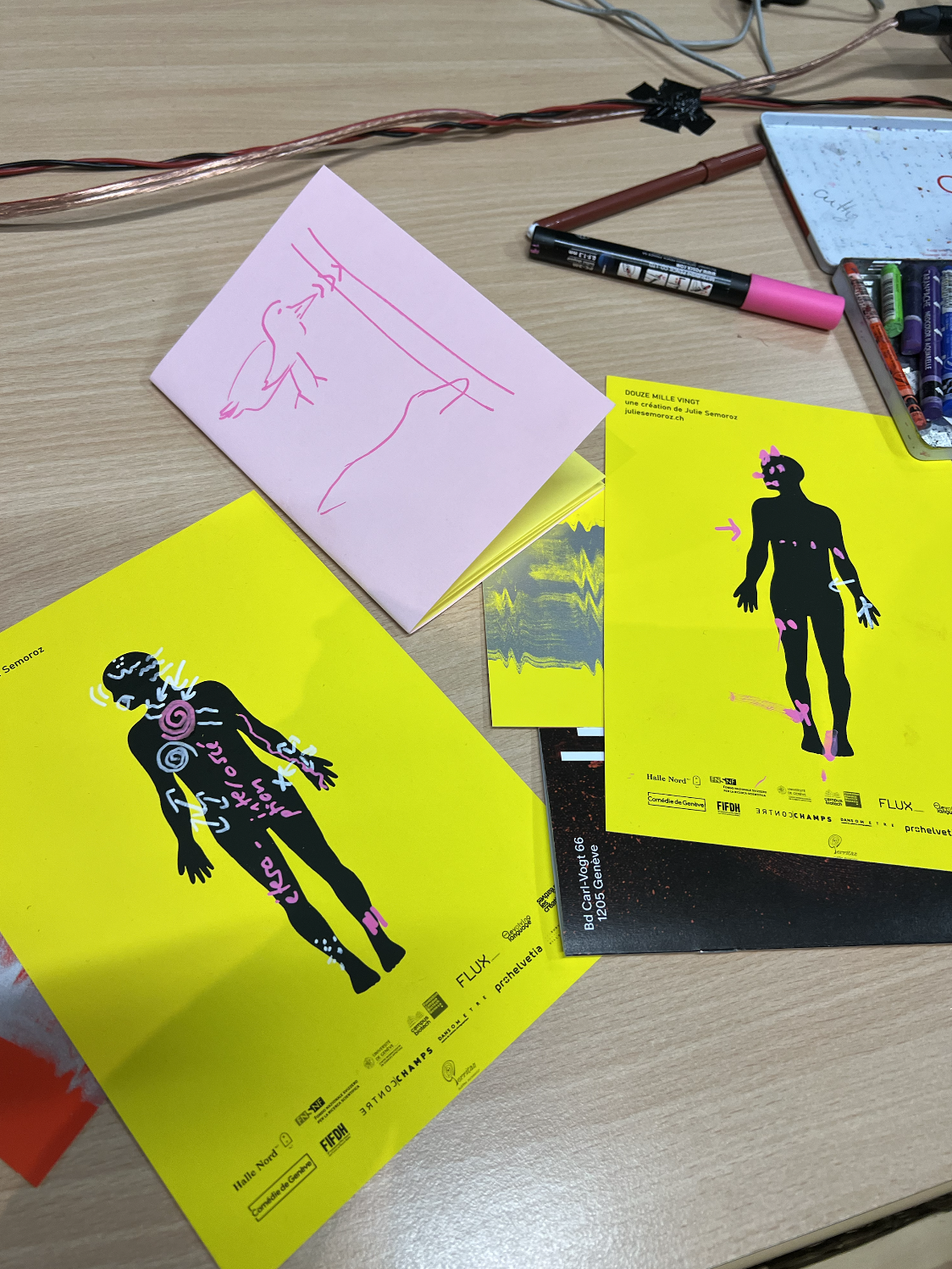
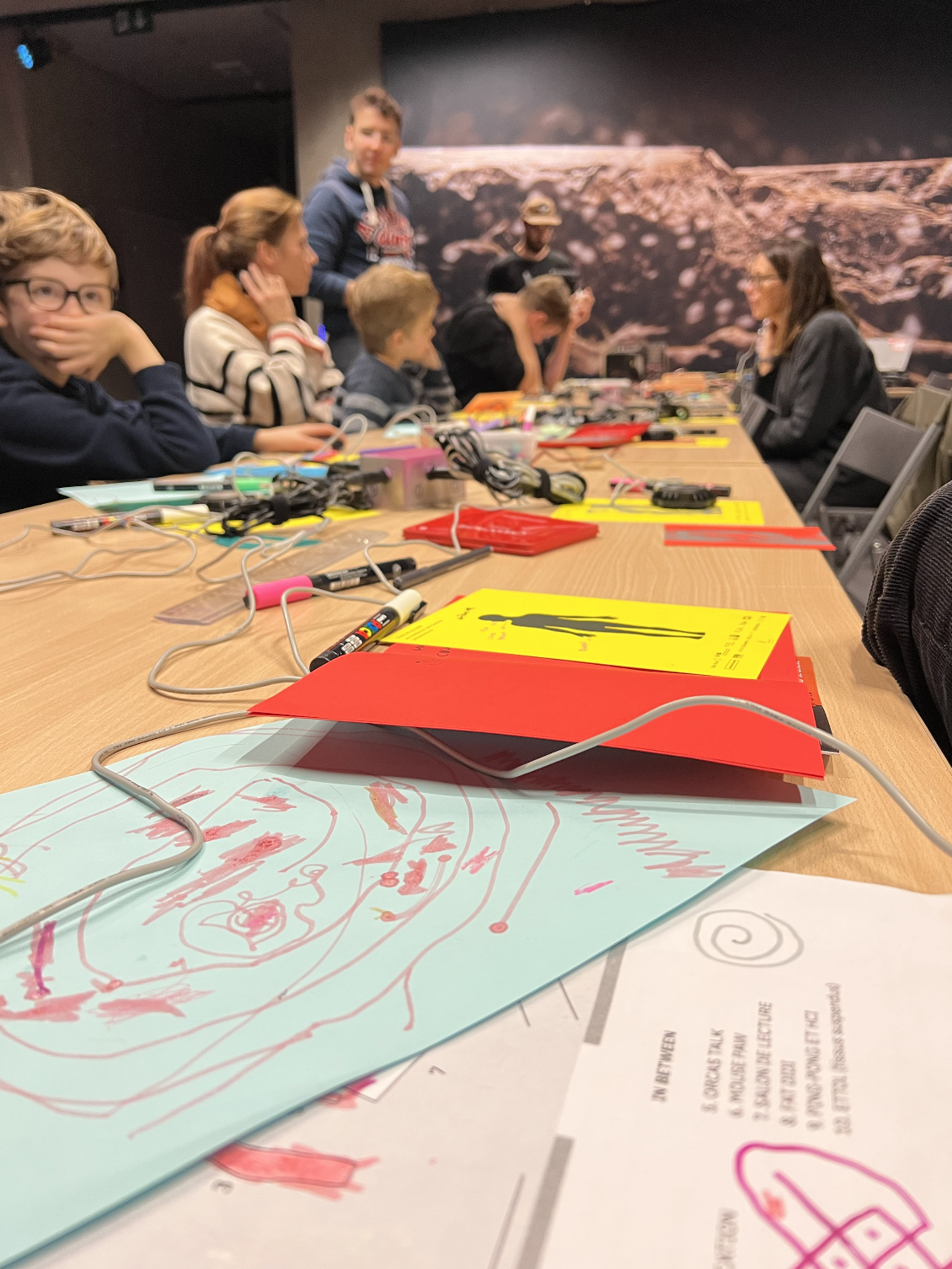
RESEARCH / RECHERCHE
Emotion / Émotion
Emotions are brief adaptive reactions to events that are important to the individual. During an emotional episode, the brain rapidly evaluates the information available and prepares the body to react. Emotions are often accompanied by expressive signals, such as facial or vocal signals. It is the combination of these physiological and psychological changes that enables us to feel a conscious emotional experience or emotional feeling.
Les émotions sont de brèves réactions d’adaptation à des événements importants pour l’individu. Au cours d’un épisode émotionnel, le cerveau évalue rapidement l’information disponible et prépare le corps à réagir. Les émotions sont souvent accompagnées de signaux expressifs, par exemple, faciaux ou vocaux. C’est la combinaison de ces changements physiologiques et psychologiques qui nous permet de ressentir une expérience émotionnelle consciente ou sentiment émotionnel.
Language
Through sounds, gestures or writing, language plays a vital role in human communication. It helps us to structure and explain our thoughts, and to understand the world around us. Interacting with biological, linguistic and cultural developments, language diversifies and evolves over time, and is at the heart of our social organisation.
À travers des sons, des gestes ou l’écriture, le langage joue un rôle primordial dans la communication humaine. Il nous aide à structurer et expliciter notre pensée, à comprendre le monde qui nous entoure. En interaction avec des évolutions biologiques, linguistiques et culturelles, le langage se diversifie et évolue au cours du temps, il est au cœur de notre organisation sociale.
Vocalisations
The vocalisations produced by mammals - including the human voice - are based on a common physiological system. The flow of air expelled by the lungs is transformed into sound by passing through the larynx and vocal cords, which then begin to vibrate more or less rapidly (this is the source of the sound). This initial sound is then filtered by the vocal tract (the pharynx and the nasal and oral cavities), which determine, for example, the duration of the vocalisation, its energy (strong or weak) or its frequency (low or high). Vocalizations play a central role in communication and language.
Les vocalisations produites par les mammifères - voix humaine incluse, repose sur un système physiologique commun. Le flux d’air expulsé par les poumons se transforme en son en passant par le larynx et les cordes vocales qui vont alors se mettre à vibrer plus ou moins vite (c’est la source du son). Ce premier son ainsi généré va être ensuite filtré par le tractus vocal (le pharynx et les cavités nasales et orales) qui vont déterminer par exemple, la durée de la vocalisation, son énergie (forte ou faible) ou sa fréquence (grave ou aiguë). Les vocalisations ont une place centrale dans la communication et le langage.
Inter-species communication / Communication interespèces
Inter-species communication is the exchange of information between at least two individuals of different species. It is found in social species, including humans, who need to interact to increase their well-being or their chances of survival.
La communication inter-espèces regroupe l’ensemble des échanges d’informations entre au moins deux individus d’espèces différentes. Elle se retrouve chez des espèces sociales, humaine y compris, ayant la nécessité d'interagir pour augmenter leur bien-être ou leur chance de survie.
Neuronal synchronisation and desynchronisation / Synchronisation et désynchronisation neuronales
Communication between different brain regions is essential for organisms to function properly. One of the ways this happens is through neuronal synchronisation, when two populations of neurons that are more or less distant from each other come into phase, i.e. they oscillate in a similar way. Neuronal populations may be physically connected but temporarily unable to exchange information because they are out of sync. This phenomenon makes it possible to organise neural networks in a differentiated way, dynamically from tens or hundreds of milliseconds to several seconds.
La communication entre différentes régions cérébrales est essentielle au bon fonctionnement des organismes. Elle se fait entre autres grâce à la synchronisation neuronale lorsque deux populations de neurones plus ou moins distantes se mettent en phase, c’est-à-dire qu’elles oscillent de manière similaire. Des populations neuronales peuvent être physiquement connectées mais transitoirement incapables d’échanger de l’information car elles sont désynchronisées. Ce phénomène permet donc d’organiser les réseaux neuronaux de manière différenciée et ce de manière dynamique de l’ordre de dizaines ou centaines de millisecondes, à plusieurs secondes.
Prosody / Prosodie
This is the melody of vocalisations. It is found in the human voice but also in other species. Through changes in intonation, amplitude and rhythm, prosody is used to communicate a wide range of information, including emotions, intentions and physiology.
C’est la mélodie des vocalisations. Elle se retrouve dans la voix humaine mais également chez d’autres espèces. À travers notamment des changements d’intonation, d’amplitude ou de rythme, la prosodie permet de communiquer de nombreuses informations telles que les émotions, les intentions et la physiologie.
Vibrations
There are many different types of body vibration. When we vocalise, for example, the vibrations from our vocal cords are transmitted to the adjacent tissues, producing vibrations in the throat and rib cage. These vibrations have an impact on a number of mechanoreceptors present in the various tissues and can inform us about our emotional state. These receptors are also involved in proprioception and interoception.
Les vibrations corporelles sont diverses. Lorsque l’on vocalise en parlant par exemple, les vibrations de nos cordes vocales sont transmises aux tissus adjacents, ce qui produit des vibrations au niveau de la gorge et de la cage thoracique. Ces vibrations impactent sur de nombreux mécano-récepteurs présents dans les différents tissus et peuvent nous informer sur notre état émotionnel. Ces récepteurs sont également impliqués dans la proprioception et l’intéroception.
Interoception vs proprioception / Intéroception vs proprioception
These two mechanisms are at work during emotional experiences. Proprioception is our ability to sense bodily information, such as muscular tension or the position of our limbs. Inner perception refers to our ability to integrate information from inside our body, such as visceral, cardiac and respiratory information. This is an essential dimension of emotional experience.
Ces deux mécanismes sont à l’œuvre lors des expériences émotionnelles. La proprioception est notre capacité à pouvoir ressentir des informations corporelles comme par exemple ressentir des tensions musculaires ou la position de nos membres. L’intéroception réfère à notre capacité à intégrer les informations de l’intérieur de notre corps comme celles viscérales, cardiaques, respiratoires, etc. Cette une dimension de l’expérience émotionnelle essentielle.
NIRS
Near infrared spectroscopy (NIRS) is like a torch shining on the blood vessels in the brain. It is used to study the concentration of oxygen contained in haemoglobin: the more oxygen a region of the brain has, the more activated it is.
La spectroscopie proche infraRouge (NIRS) est similaire à une lampe torche éclairant les vaisseaux sanguins du cerveau. Elle permet d’étudier la concentration d’oxygène contenue dans l’hémoglobine: plus une région cérébrale a d’oxygène et plus elle est activée.
INTERFACULTY CENTRE FOR AFFECTIVE SCIENCES (CISA)
www.unige.ch/cisa
What are emotions? Why do we have emotions? How does the brain process emotions? What role do emotions play in cognition and behaviour? Can emotions be measured? Does culture influence emotions? Can machines recognise and express emotions?
The main aim of the Interfaculty Centre for Affective Sciences (CISA) is to advance our understanding of emotions and other affective phenomena, and their influence on individuals and society. CISA develops fundamental research programmes on emotions, interdisciplinary training for scientists and partnerships with the public and private sectors. CISA has more than 10 research groups from psychology, neuroscience, humanities and social sciences.
CENTRE INTERFACULTAIRE EN SCIENCES AFFECTIVES (CISA)
Qu'est-ce qu'une émotion ? Pourquoi avons-nous des émotions ? Comment le cerveau traite-t-il les émotions ? Quel rôle les émotions jouent-elles dans la cognition et le comportement ? Peut-on mesurer les émotions ? La culture influence-t-elle les émotions ? Les machines peuvent-elles reconnaître et exprimer les émotions ?
L'objectif principal du Centre interfacultaire en sciences affectives (CISA) est de faire progresser notre compréhension des émotions et des autres phénomènes affectifs, ainsi que de leur influence sur les individus et la société. Le CISA développe des programmes de recherche fondamentale sur les émotions, des formations interdisciplinaires pour les scientifiques et des partenariats avec les secteurs public et privé. Le CISA compte plus de 10 groupes de recherche issus de la psychologie, des neurosciences, des sciences humaines et des sciences sociales.
PÔLE DE RECHERCHE NATIONAL (PRN) EVOLVING LANGUAGE
evolvinglanguage.ch/fr/accueil
Le Pôle de recherche national (PRN) a pour objectif de résoudre l’un des plus grands mystères de l’être humain: qu’est-ce que le langage ? Comment notre espèce a-t-elle pu développer cette capacité à s’exprimer ? Comment le langage est-il traité dans notre cerveau et comment de nouvelles variations linguistiques sont-elles sans cesse transmises aux nouvelles générations ? Comment le langage va-t-il changer face aux nouveaux médias et à la neuro-ingénierie ?
Afin d’explorer l’évolution du langage dans sa globalité, Le PRN Evolving Language réunit plus de 30 groupes de recherche issus de 9 institutions différentes et répartis dans toute la Suisse.
Le PRN Evolving Language un consortium de recherche national et interdisciplinaires incluant: linguistique, psychologie, neurosciences, biologie, anthropologie, médecine, génétique, informatique, géographie, mathématiques et philosophie.
Poster photo © Michael Cordey / Poster design © Rob Van Leijsen
NATIONAL CENTRE OF RESEARCH (NRC) EVOLVING LANGUAGE
The National Centre of Competence in Research (NCCR) aims to solve one of mankind's greatest mysteries: what is language? How did our species develop this ability to express itself? How is language processed in our brains, and how are new linguistic variations constantly passed on to new generations? How will language change in the face of new media and neuro-engineering?
To explore the evolution of language in its entirety, the NCCR Evolving Language brings together more than 30 research groups from 9 different institutions across Switzerland.
The NCCR Evolving Language is a national, interdisciplinary research consortium including: linguistics, psychology, neuroscience, biology, anthropology, medicine, genetics, computer science, geography, mathematics and philosophy.
Poster photo © Michael Cordey / Poster design © Rob Van Leijsen



